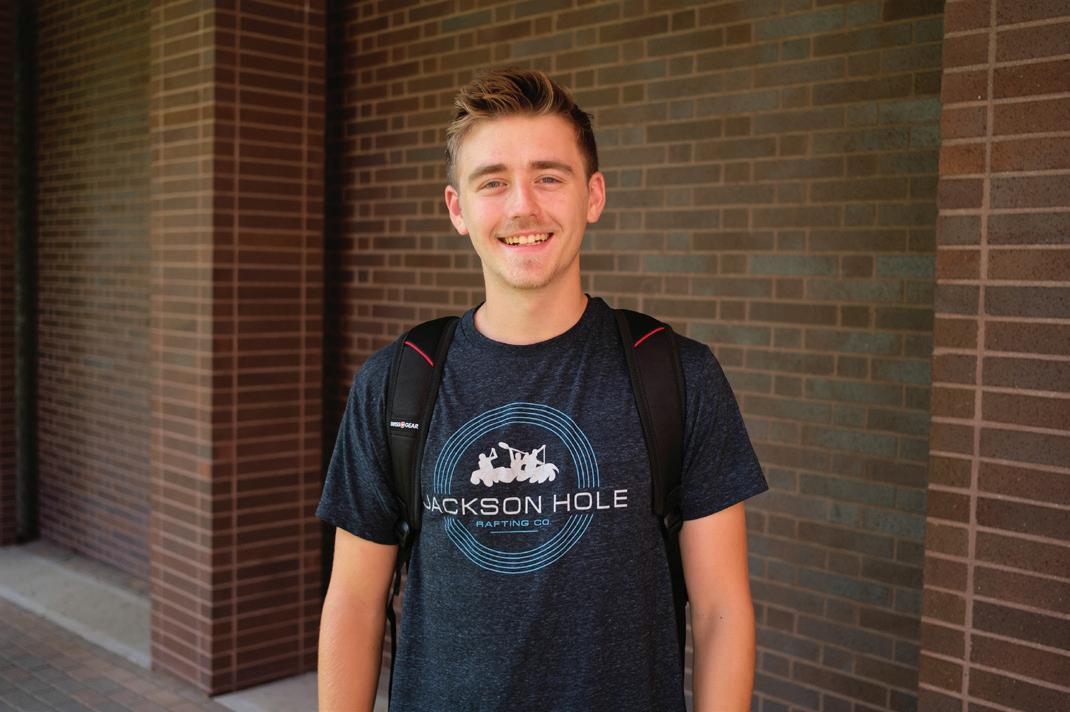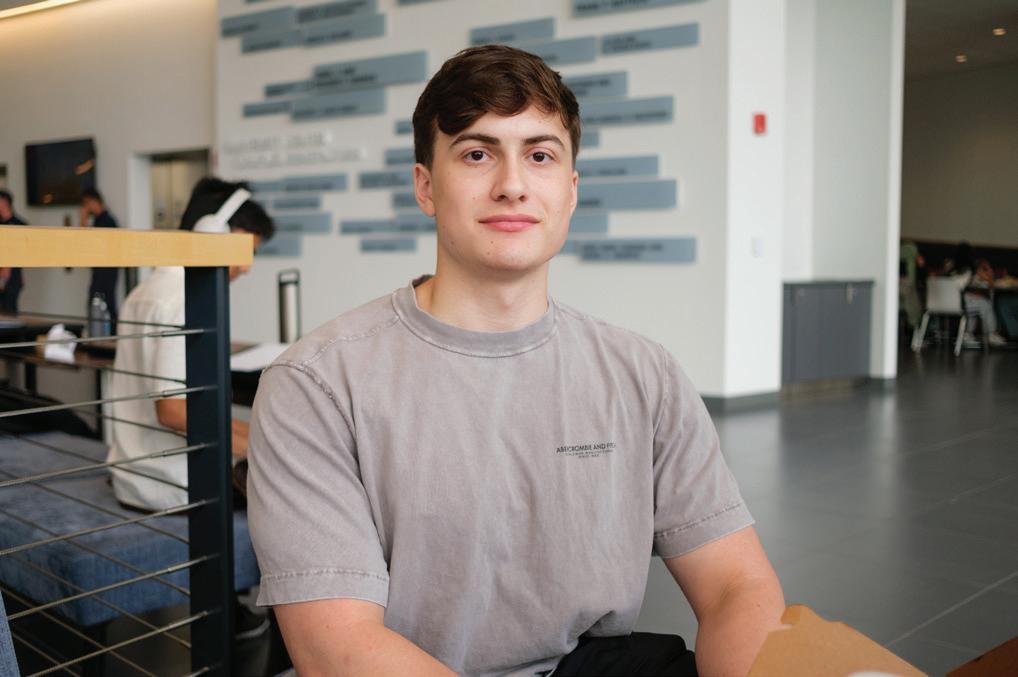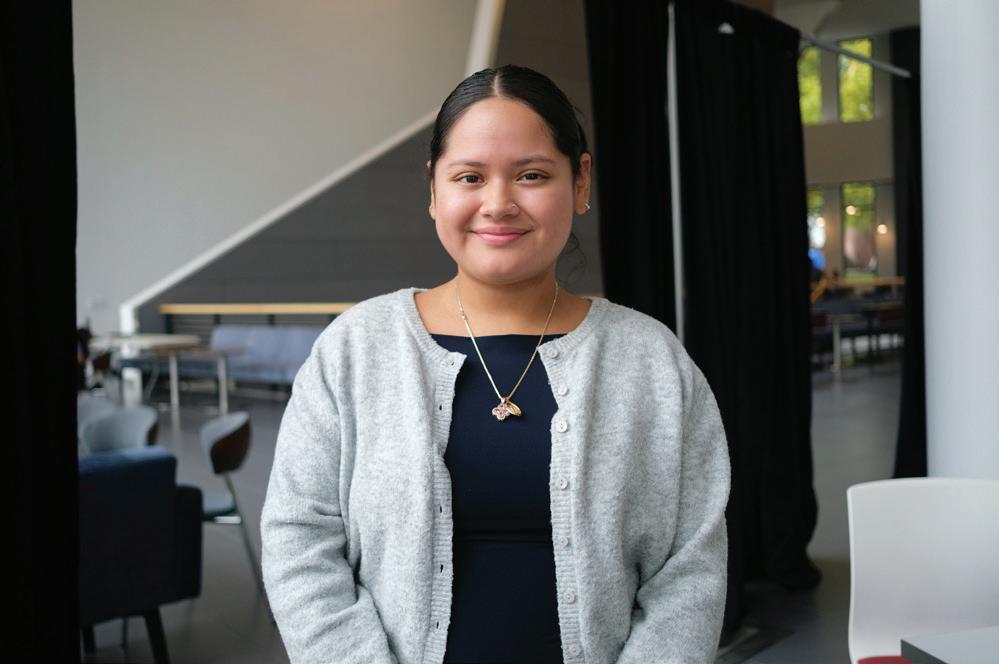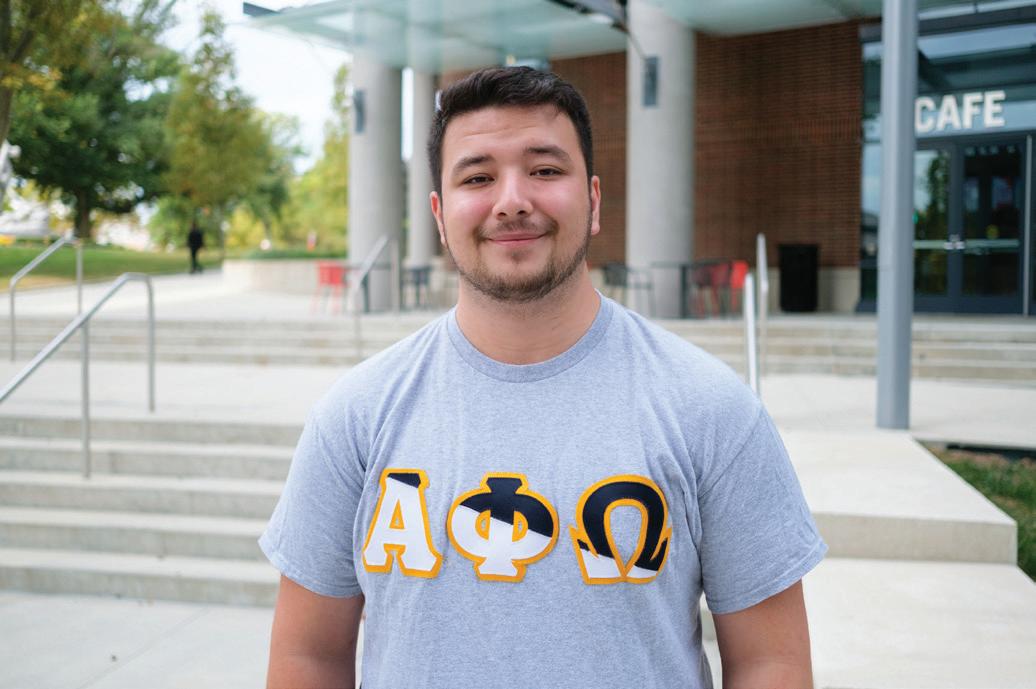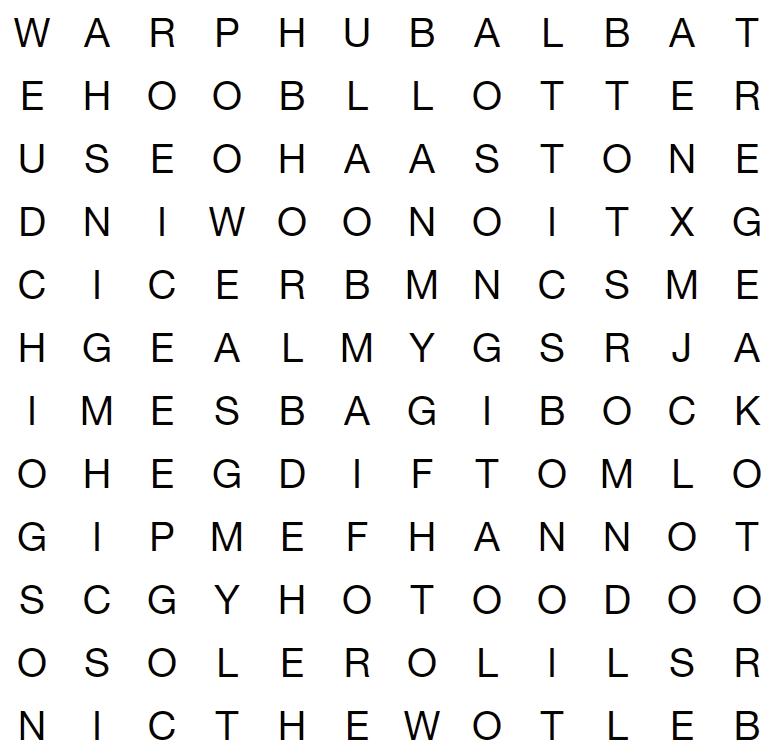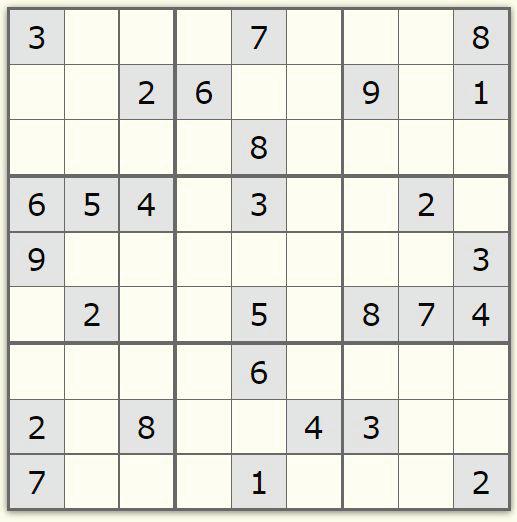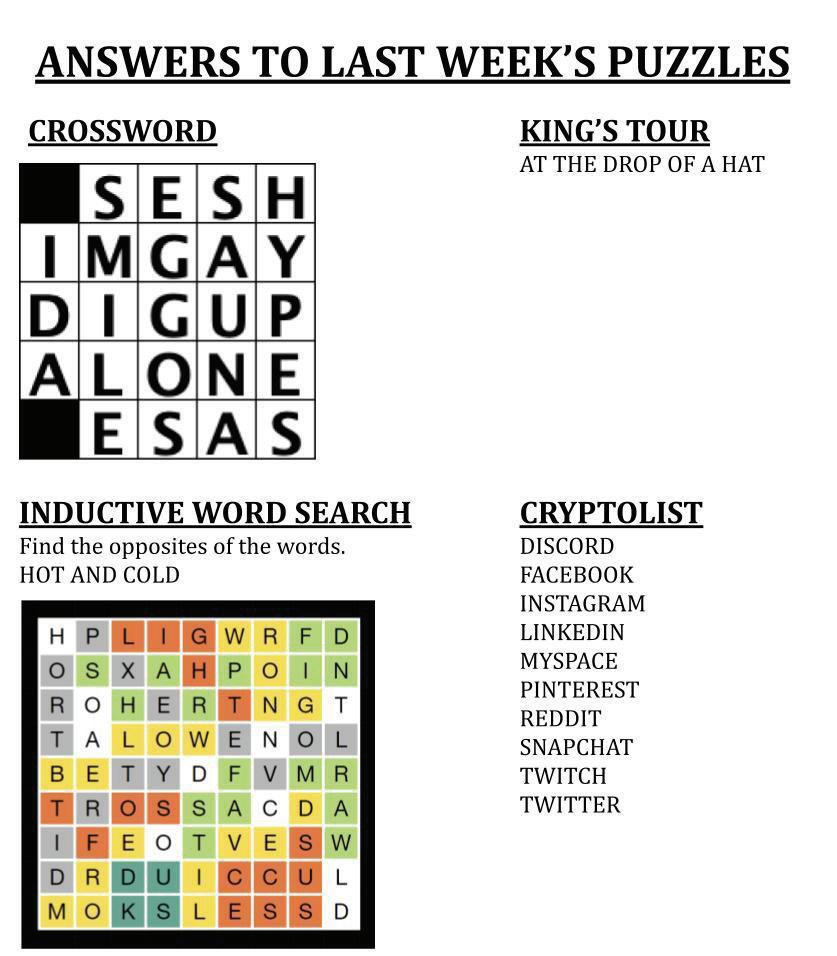

big turnout
BY JOSEPHINE CHOONG, CONTRIBUTOR
On September 11, the Office of International Programs offered the annual Study Abroad Fair in the Babbio Atrium. With 11 providers and hundreds of programs to explore, the fair provides a chance to learn more about the countries involved and the exciting opportunities available.
The Study Abroad Fair helps students to learn and compare the different programs offered. There is a large variety of opportunities, from internships, winter and summer terms, community service, exchange programs, global semesters, research, and spring break courses. While many providers returned, a new addition was representation from Stevens’s chapter of Engineers Without Borders, which had a table to promote its service project in Peru. This August, some of its members traveled to their partner community in the Andes for the assessment phase of the project.
When the fair began in 2014, there were around 50 attendees. That number has since expanded to over 200, leading to more students sharing their experiences.
During the fair, Global Ambassadors, study abroad stu-
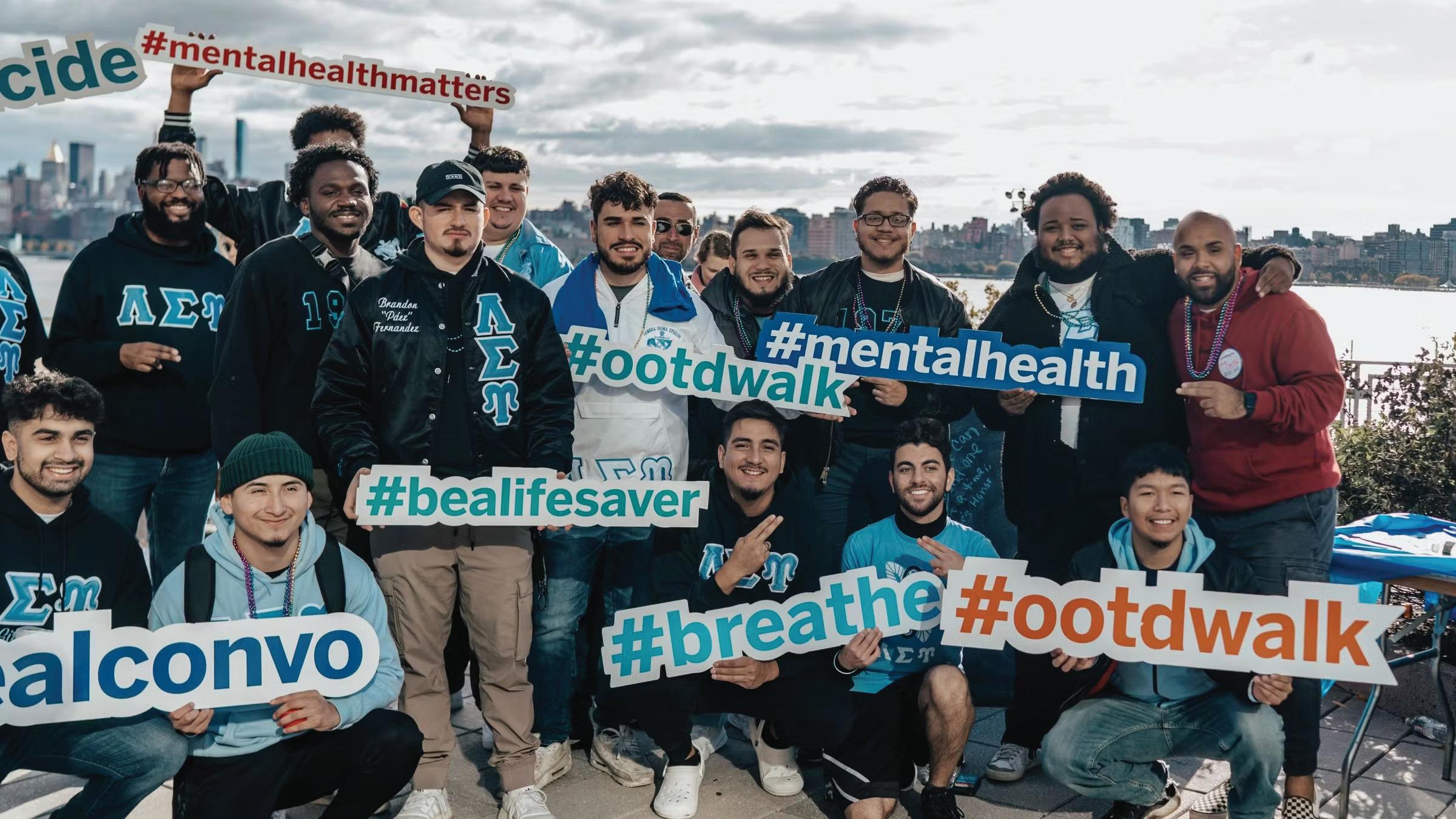
CAPS launches Stigma Free Stevens campaign
BY JEREMIAH CHINWENDU, STAFF WRITER
“I need help” is one of the hardest things for people to say when they are dealing with their life’s struggles. One of the main reasons for this is the stigma surrounding mental health struggles that exist within our society. To do its part in helping the Stevens community, CAPS is launching the Stigma Free Stevens campaign, which aims to educate people about mental health issues and encourage them to seek professional help if they are struggling.
For centuries, issues with mental health have been viewed as a source of
shame or evidence of failure in one’s life. This stigma makes people who suffer mentally afraid of speaking out when they need help, meaning they let their negative thoughts fester in their minds and create even greater problems in their lives that are much harder to deal with.
Thankfully, the past few decades have seen a change in the societal norm when it comes to seeking mental help. Issues with mental health are now being taken as seriously as medical concerns, but despite this change, the stigma of mental health struggles continues to be a negative influence on those who need help.
Stevens’ Counseling
and Psychological Services (CAPS) have made note of the effect that stigma has on the mental health of students. The Spring 2024 Healthy Minds Study revealed that “83% of Stevens students reported being secretive about their mental health”, says Dr. Eric Rose, Director of Wellness and Director of CAPS. He also notes the effects stigma has on self-esteem, as the study shows, “11% [of students] feeling “inadequate” and 24% having mixed feelings about treatment’s impact on their self-image”.
There are many components to the new campaign, which garners support from students, faculty, and community leaders. CAPS
launched this campaign with “a dedicated landing page, a unique logo and support from the President during National Suicide Prevention Week,” says Dr. Rose. The campaign will be promoted through social media, print materials, and branded giveaways. CAPS also hopes to integrate the Stigma Free Stevens Campaign into upcoming major mental health events.
Strive-to-Thrive, taking place on October 10 on Palmer Lawn, is an annual community wellness resource fair where students can play games, collect giveaways, and learn about available mental health resources.
BY SEAN ANDERSON, STAFF WRITER
Throughout this week, hopeful Student Government Association (SGA) senate candidates have been moving around campus campaigning for your vote. Each candidate has been sharing who they are, what experiences they have, and how they want to contribute to improving the campus experience through the SGA. If you are unfamiliar with the SGA, it is important to note that the SGA oversees or is actively involved in most student activity across campus. Leading the SGA are the President, the Vice President of Operations, and the rest of the cabinet who are selected by those in the first two positions. The SGA is made up of several committees, including campus wellness, budget, oversight, academic affairs, government and community, rules, and diversity, equity, inclusion, belonging, and accessibility. The senators from the different schools are divided into these different committees with each senator placed into two of them. However, senators are allowed to contribute to any of the other committees as well if they are interested in issues or improvements in any of them.
NATIONAL NEWS HEADLINES
Harris and Trump spar in 2024’s second blockbuster debate
BY SEAN ANDERSON, STAFF WRITER
On September 10, former President Donald Trump and current Vice President Kamala Harris came face-to-face for the first time in a highly anticipated debate. Following Joe Biden’s perceived poor performance in the prior debate, the current President of the United States decided to cancel his campaign for re-election. Kamala Harris was quickly chosen by the Democratic Party to be the replacement candidate, and the two candidates agreed on the debate day.
The presidential debate took place at the National Constitution Center in Philadelphia, Pennsylvania. Prior to the debate, the candidates agreed upon format rules in line with those of the previous Trump-Biden debate. The planned time for the debate was 90 minutes, with two commercial breaks. There was no audience, no opening statements, and no communication between the candidates and their
campaign staff during the breaks. Additionally, the candidates were not allowed to ask each other questions; only David Muir and Linsey Davis, the moderators, were given this permission. Each candidate was allowed two minutes to respond to a question, two minutes to rebuttal, and one minute to clarify or follow-up. This kept a streamlined and fair debate where the candidates were on equal ground and had equal opportunity to speak.
The night began amicably as the two candidates shook each other’s hand before taking their place at their podium. The moderators began by addressing one of the biggest topics of interest for voters: the economy. This topic kicked off the main key points that each candidate was trying to land on each other. For Harris, she began by stating her plan of an “opportunity economy” while also implying that she believes Trump’s plan would benefit the rich. Harris elaborated further on her plan, stating
(6)
Father of Georgia school shooter faces charges
BY ALLIE HALVERSON, CONTRIBUTOR
On Wednesday, September 4, 14-year-old student Colt Grey opened fire with a black AR-15 rifle at Apalachee High School in Winder, Georgia. Officials reported four fatalities, two students and two teachers, making the tragedy the deadliest school shooting in Georgia’s history. In addition, nine other students were injured and taken to the hospital following Colt Grey’s surrender to school resource officers. Grey, who was arrested and indicted for four counts of felony murder, had a traumatic childhood, which was documented by law enforcement last year following an FBI investigation into online threats associated with the suspect’s email about “Shooting up a middle school.” During the Jackson County Sheriff’s Department’s investigation into these threats, Colin Grey, the suspect’s father, told investigators he was no longer with his wife, the family had been evicted, and he owned several guns. He also told investigators that he was teach -
ing his son about “firearms and safety.” Unbeknownst to FBI investigators, Grey purchased his son an AR15 rifle as a gift; his lawyer has declined to say whether there were gun locks in the house.
Colin Grey was charged with two counts of second-degree murder, four counts of involuntary manslaughter, and eight counts of cruelty to children3 and could face up to 180 years in prison if convicted. The severity of these charges will test the limits of parental responsibility in the U.S. legal system, as they are dependent on the implications of Grey providing access to the weapon used by the 14-year shooter and what he knew about his son’s mental state.
These charges being brought against Grey are only the second time the parents of a mass shooter have been charged in connection to their child’s attack. In February and March, the mother and father of teen shooter Ethan Crumbly were each convicted of two counts of manslaughter in separate
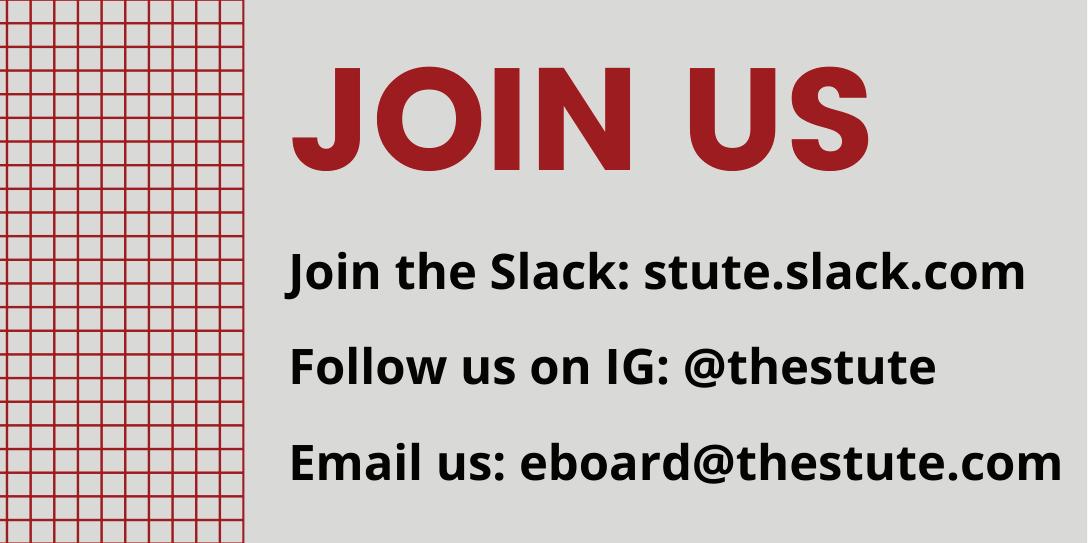
China accelerates Mars mission in blow to US ambitions
BY JEREMIAH CHINWENDU, STAFF WRITER
China’s plans for exploration of Mars have moved up by two years, meaning it hopes to launch its Tianwen 3 Mars sample return mission by 2028. This sudden acceleration in their plans has sparked tension with the US, leading to speculation that a “new space race” is underway.
Exploration of Mars will give vital information about both the planet and our solar system, and the first country to achieve this will be the world leader in space exploration. Despite billions of dollars being spent and having collaborators around the world, the US is behind in its own plans to return samples from Mars and the window of opportunity to make this journey is incredibly small and precise. Nevertheless, both countries, as well as others, continue to spearhead their efforts for Mars travel.
At the second International Deep Space Exploration Conference that took place earlier this month, Liu Jizhong, the chief designer of the Tianwen 3 mission,

laid out the components of the plan and what China hopes to collect. The mission will consist of two rocket launches from Earth, writes Sharmila Kuthunru of Space.com. “One will carry a lander and a two-stage ascent vehicle, and the other an orbiter and Earth-return craft.” The mission objective is to use the lander’s drill to collect and return roughly 600 grams or 21 ounces of Martian soil. These surface samples will give a clue about the planet’s climate evolution as possible signs of life. China plans to advance the exploration efforts even further by developing a “foldable, autonomous helicopter similar to NASA’s Ingenuity, as well as a sixlegged robot to collect samples away from the landing site,” reports Space.com.
Astrophysicist Quentin Parker of Hong Kong University reports that “China is also offering 25kg (55 pounds) of space for international payloads to piggyback on the Tianwen-3 orbiter,” writes Ling Xin of South China Morning Post. This payload will include more soil samples
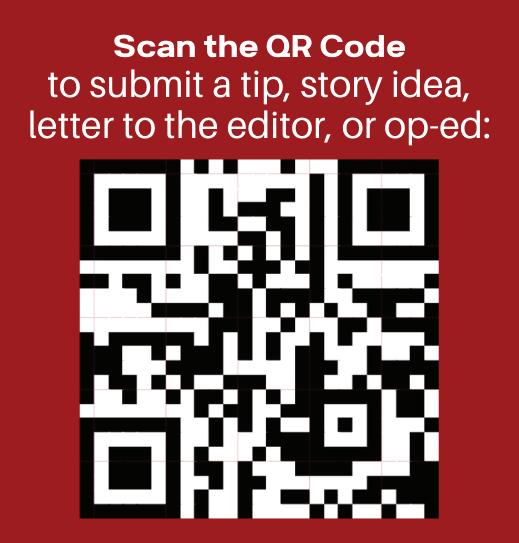
Masthead
Volume CXXI No. 3
Executive Board
EDITOR-IN-CHIEF......................................ISABELLA ZIV ‘25
BUSINESS MANAGER............................TANYA AVADIA ‘26
MANAGING EDITOR..............................ARTHUR SERRA ‘27
LAYOUT EDITOR................................JIYA JAISINGHANI ‘27
OUTREACH CHAIR.........................................AVA WANG ‘25
DIGITAL MANAGER...................................ABBY JACOBS ‘27
SECRETARY..........................................NICOLE GIARDINO ‘25
HEAD COPY EDITOR.....................EVAN PAPAGEORGE ‘26
Editorial Board
NEWS EDITOR.........................................BEN KNOBLOCH ‘25
SCIENCE EDITOR..................................RIYANA PHADKE ‘27
OPINION EDITOR....................................TASHA KHOSLA ‘25
SPORTS EDITOR................................RUTHIE MULLISKY ‘26
FEATURES EDITOR...................................TIANNA SPITZ ‘27
PULSE EDITOR........................................MIA PETROLINO ‘25
Operations Board
HEAD PHOTOGRAPHER RAFAEL LEE LI ‘25
Staff & Contributors
Josephine Choong
Jeremiah Chinwendu
Sean Anderson
Allie Halverson
Aditi Shilawat
Amelie dela Cruz
Camryn Winant
Charlie Beall
Abby Thomas
Prisha Vagvala
Madison Heller
Jonathan Lai
Kevin Castner Jr.
Stephen Pachucki
Jack Scherban
Victoria Okonkwo
GENERAL.........................................EBOARD@THESTUTE.COM
EDITOR-IN-CHIEF.........................EDITOR@THESTUTE.COM
ADVERTISING.............................BUSINESS@THESTUTE.COM
OFFICE.................................UNIVERSITY CENTER ROOM 216B
NOTICE A MISTAKE?
Email us at eboard@thestute.com.
Disclaimer
All opinions and editorials reflect the views of their respective author(s). No Part of The Stute may be reproduced in any form, in whole or in part, without the written consent of the Editor-in-Chief. Cited references of The Stute are permitted.
All members of the Stevens community are able to submit a Letter to the Editor to be published in The Stute. Letters must refer either to a piece published in The Stute or to The Stute in general and must be between 400 – 800 words in length. Submit letters to editor@thestute.com with your name and title (when applicable) or using our Google form. For writers who wish to write a Letter to the Editor anonymously, please see our policy on anonymity.
The Editorial Board reserves the right to choose whether or not to publish a submitted Letter to the Editor based on a majority rule vote, and additionally reserves the right to edit letters for clarity or request authors to revise. Provided that the author approves the final version, The Stute reserves the right to edit letters according to our copy editing procedures, defined in our policies.
All members of the Stevens community are able to submit a standalone opinion piece (otherwise known as an Op-Ed) to be published in The Stute. Op-Eds must be between 400 – 800 words, but longer submissions will be considered on a case-by-case basis. To submit an OpEd please email eboard@thestute.com with your name and title (when applicable) or using our Google form (tinyurl.com/submit-t0-stute). For writers who wish to write an Op-Ed anonymously, please see our policy on anonymity.
The Editorial Board reserves the right to choose whether or not to publish a submitted Op-Ed based on a majority rule vote, and additionally reserves the right to edit Op-Eds for clarity or request authors to revise. Provided that the author approves the final version, The Stute reserves the right to edit Op-Eds according to our copy editing procedures, defined in our policies.
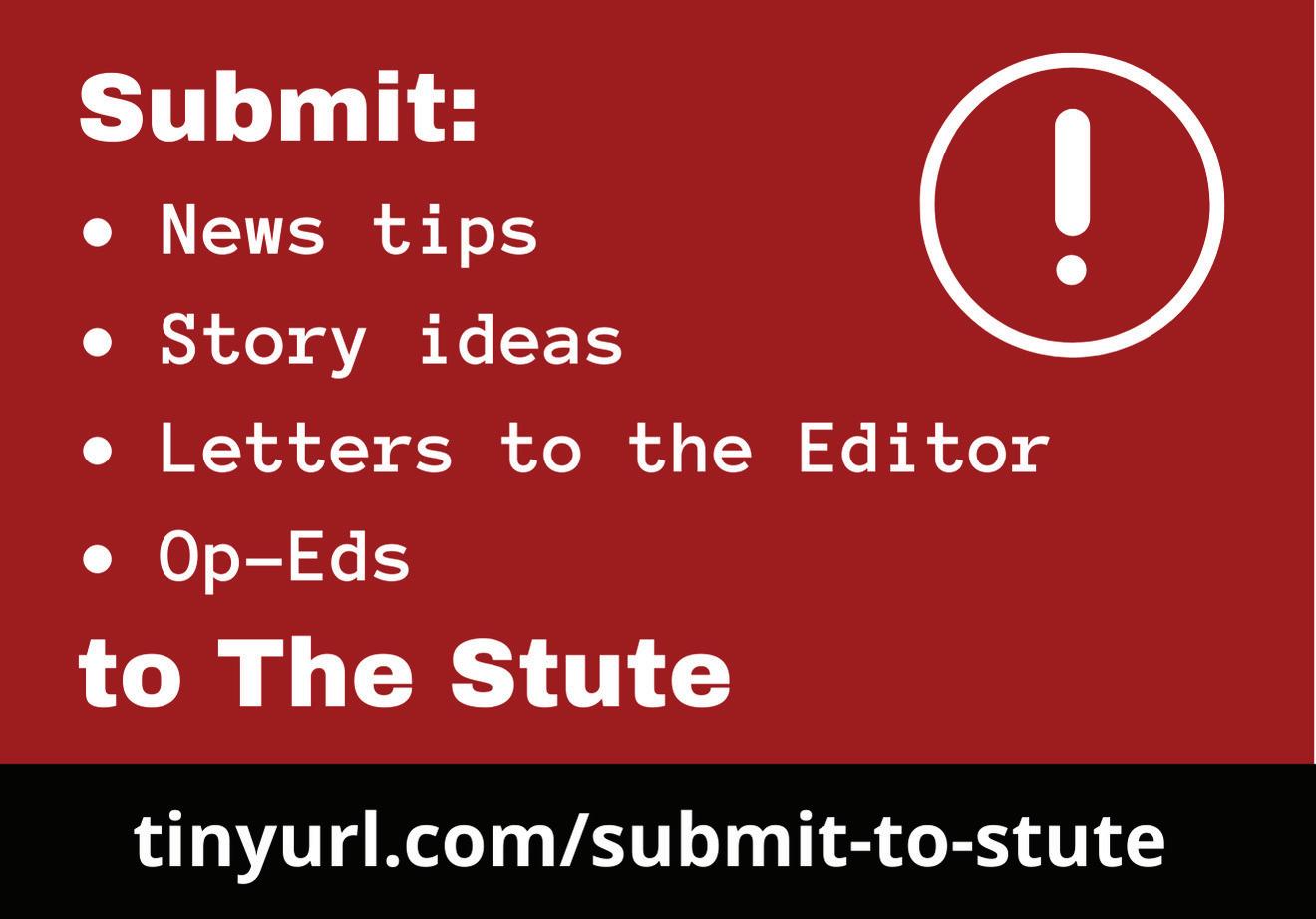
ABROAD
CONTINUED FROM PAGE 1
dents, and exchange students were available to answer any questions. Meanwhile, representatives provided QR codes, email sign-ups, contact cards, and flyers. Some provided details for in-person info sessions after the fair’s conclusion.
Susi Rachouh, the Director of International Programs, emphasized that any student in any major can study abroad. Most students study abroad during a summer or J-term, which refers to a period between semesters, and take a general elective or humanities course. Rachouh states that it isn’t just the course that’s important but the experience from exploring a new country.
Stevens stresses the importance of soft skills like resilience and flexibility. “One of my favorite ones to talk about is the skill of tolerating
STIGMA
CONTINUED FROM PAGE 1
Another event where students will see the campaign in action is the Out of Darkness Walk, taking place on October 20. Members of the Stevens community will have the opportunity to join the American Foundation for Suicide Prevention (AFSP) and the city of Hoboken as they walk to spread awareness for and raise funds to diminish the nation’s suicide epidemic.
While there are many key components to this campaign and a well-structured plan in place to ensure its success, the best way for
ambiguity,” Rachouh explains. “You don’t always know what’s happening. [...] You don’t always know what’s going on. Things are ambiguous. When you’re actually in the country and walking around, [...] you might not know everything or even the academics exactly. You will build up your muscle of being able to tolerate that you don’t know exactly what’s happening all the time.”
Rachouh notes that students question how studying abroad will help their careers. She illustrates that many employers look for students who are independent. When students return from their trip, many bring up their newfound sense of independence because their parents and friends aren’t there. In addition, it builds confidence and cultural awareness. It introduces students to a whole new network of people in the same field who have been taught differently, allowing them to understand the academic differences between cul-
us to remove mental health stigma on campus, according to Dr. Rose, is by helping one another to overcome our struggles.
“Students can help reduce mental health stigma by sharing their positive experiences with getting support from a mental health professional, which can encourage others to seek help”, says Dr. Rose. Stevens’ Active Minds chapter offers a great opportunity for students to “support mental health initiatives and connect with others dedicated to similar goals.” This campaign aims to help faculty and staff as well. Human resources, the Office of Student Support, and other University leaders are active in supporting and promoting
tures. Study abroad alumni recall that they look at the world with a different lens.
If interested students wish to learn more, they can attend the weekly info sessions on Wednesdays at 3 p.m. (and occasionally at 4 p.m.) at Babbio 321. A reminder will be sent through emails and will be posted on DuckLink. More events like Lessons from Abroad, a panel with study abroad alumni, will occur throughout the year. Depending on their last name, students can book an appointment with either Rachouh or Jane Winthrop, Assistant Director of International and Special Programs, to understand more about the program options, application requirements, or other important information. However, freshmen must wait until November to schedule meetings.
“Understanding the world is an important part of any student’s education,” Rachouh says. “What better way to do it than to explore through study abroad.”
this campaign so the message can reach all over the Stevens and the Hoboken community. Be on the lookout for the campaign promotions and events happening on campus. It is incredibly important to ensure that all students feel safe at all times and hear if they are struggling with their mental health in any way. Do your part in uplifting your fellow students by removing stigma from the Stevens Community. Students who find themselves struggling with mental health can direct their concerns to CAPS or Dr. Rose. There are a number of resources at your disposal if you need them, so please don’t feel afraid to reach out.
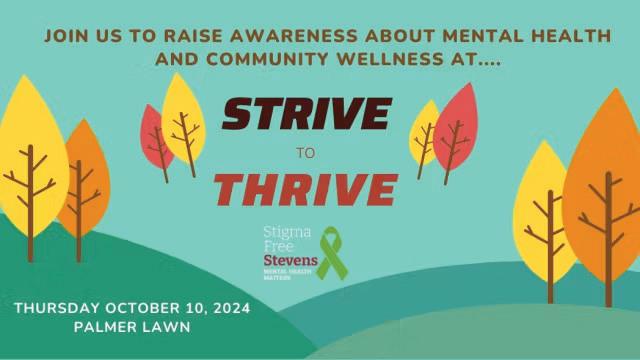
ELECT CONTINUED FROM PAGE 1
In an SGA report released to the student body on September 6 by Nick Smith, current SGA president, the goals, values, and accomplishments of the association were presented. In this report, the SGA states its core values revolve around being inclusive leaders, being deeply kind, being empowerers of change, and being personally impactful. In upholding these values, the SGA has taken actions to improve the student experience by raising student activity funding by 41% over a two year period. The SGA oversees over 100 student organizations, and their goal is to “empower our diverse student body to shape the direction of student activities and campus culture.” In addition to this, the SGA has taken action recently to reclaim the Gateway North Building for student activities with the intention of creating a more inclusive campus. In an effort to connect faculty and students, they also launched “Take Your Professor Out” (TYPO). This program allows students who want to learn more about a professor the ability to apply for a Pi Kitchen voucher and share a meal with the professor. One of the most recent programs made possible by the SGA just last semester is Feed the Flock. This program, expected to be relaunched for the Fall semester on October 1, includes a meal swipe donation system where
students who have extra swipes can donate them to the program. These swipes can be given to students who have run out of swipes so that they can still have a nourishing meal.
Now, as it happens each year, the SGA is holding elections to determine who will be responsible for continuing the efforts of the association. The election process began last week when the intent to run form was opened. The form included selecting what school one belonged to as well as a section allowing the candidate to explain why they were interested in becoming a senator. These responses were presented on the student body voting form so that voters could become familiar with each student running for senator. Previously, each nominee would also have to get 75 signatures from other students in order to move on to elections, but in the current election process, that stage has been removed. To be elected into a senator position, a candidate needs to receive enough votes for at least 2.5% of the specific school’s population. The election ends this Sunday September 22, so if you have not voted yet and would like to support a candidate, there is still time. A celebration to welcome the new senators will be held Sunday at 7 p.m. during the weekly SGA senate meeting following the close of elections.
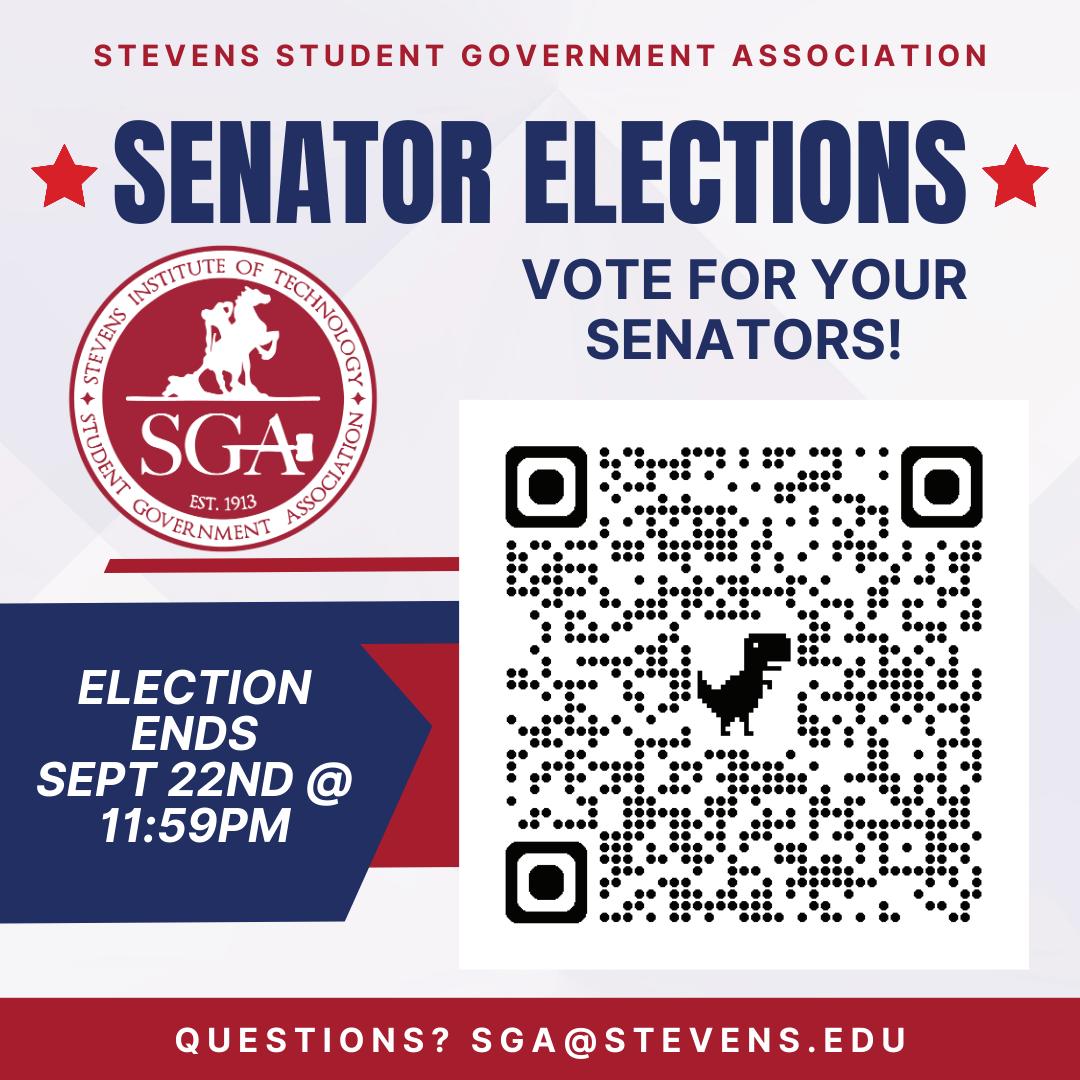
DEBATE
CONTINUED FROM PAGE 1
that it would include “extending a tax cut for those [young] families of $6,000” as well as giving “a $50,000 tax deduction to startup small businesses.” Trump responded by stating that his plan included tariffs on other countries. He continued by attributing the current inflation on the Biden administration and specifically stating that his administration had inflation at 21% while now “many things are 50, 60, 70, and 80% higher than they were just a few years ago.”
Another big topic of the night was abortion. Trump brought up his support for giving the right back to the state to decide but also brought up some claims about the opposing party supporting a vote to allow abortion at nine months. Davis followed this up by stating that “there is no state in this country where it is legal to kill a baby after it’s born.” Harris responded to Trump’s comments regarding abortion by noting that in over 20 states, there are “abortion bans which make it criminal for a doctor or nurse to provide
health care.” She also affirmed that if Congress were to pass a bill to restore the protections under Roe v. Wade, she would sign it. Harris continued by stating that Trump would sign a national abortion ban, but Trump denied this claim, stating that there was no need for it since “Democrats, Republicans and everybody else and every legal scholar wanted it to be brought back into the states.” The discussion ended with Trump being asked whether he would veto a national ban if it came up, but he did not deliver an answer.
The topic of immigration and border security was under heavy scrutiny due to its importance to U.S. voters. Harris claimed that Trump had prevented a bill that would have put thousands more agents and officers at the border, but also commented about Trump’s rallies, claiming, “people start leaving his rallies early out of exhaustion and boredom.” Trump reacted to these comments by saying that people should not go to Harris’ rallies as “there’s no reason to go.” This interaction epitomized how some of Trump’s and Harris’s back-andforths would drift away from the current topic toward unrelated
attacks.
Following the debate, new polls were taken to see where Trump and Harris stood compared to before the face-off. Many polls showed similar results, with Harris leading Trump by a small margin. According to a poll done by Reuters following the debate, “Democratic U.S. Vice President Kamala Harris leads Republican Donald Trump 47% to 42% in the race.” A Fox News poll had a similar result where 49% of registered voters nationwide said they would vote or probably vote for Harris, while 44% said that they would vote or probably vote for Trump. Last week, Trump announced on Truth Social that he would not participate in another debate, so this could be the last time these candidates are seen face-to-face in this type of setting.
Election day is November 5 this year. If you want to show support for a candidate, don’t forget to register in advance. To register, you must be at least 18 years of age or older, and you can register online, by mail, or in person at some local government offices. For more information, you can go online to usa.gov/register-to-vote.
MARS
CONTINUED FROM PAGE 1
to be shared with other countries around the world so their scientists can examine them. Tianwen 3 mission hopes to take a very quick “grab-and-go” approach to bringing Mars samples to Earth, which differs from NASA’s efforts. NASA’s Perseverance rover landed in Mars’ Jezero crater in 2021 and since then, it has been exploring that same crater, having collected 25 sample tubes of soil sample. These samples were originally intended to be collected and brought back by a separate Mars Space Return (MSR) mission, a collaboration between NASA and the European Pace Agency. However, since September of last year, there have been worries about the feasibility of this mission.
An independent review completed by NASA found that the MSR mission would cost roughly $11 billion and would not be completed until 2040, a deadline that was deemed unacceptable by those vying to beat China in the race to
Mars. In June of this year, NASA gave $1.5 million contracts to seven spacecraft companies, including SpaceX, Blue Origin, Lockheed Martin, and Northrop Grumman for “out-of-the-box” methods of space exploration that are less expensive and can be completed sooner. We have yet to see success from these companies. High importance is placed on obtaining these samples because they contain. “both fine- and coarsegrained sandstone and mudstone sediments [that] could reveal crucial clues about the chemistry of the water that deposited them billions of years ago — and, perhaps, evidence of past microbial life on Mars,” writes Kuthunru. Whichever nation “wins” will be the first country to study the planet’s geographical history and may be perceived as the new leader in Mars exploration. India also plans to launch both a helicopter and rover on Mars by 2025, according to Ling Xin. Time will tell if these efforts will end up yielding success for these countries and leaders of these countries continue to support the efforts of space exploration companies.
trials. Those convictions were based on information they possessed regarding their child’s mental state prior to the shooting and their provision of the gun used for it. While not as drastic as the charges brought against Grey, these cases and their resulting convictions have set a loose precedent for determining parental responsibility in school shootings.
Hauntingly, the context of the charges in both cases is similar, as both fathers bought the weapons for their sons as gifts shortly before the shootings. In addition to the initial acquisition of the weapons, the 9mm handgun used
in Crumbly’s case was not properly locked up prior to the shooting—the security of the storage of the weapon in Grey’s case has yet to be determined—which a juror told NBC News had influenced the jury towards a guilty verdict against the parents.
Despite these similarities, the precedent from the Michigan case is not enough to predict a conviction for Grey; His more severe charges of second-degree murder and the additional child cruelty ones will hinge on whether prosecutors can prove gross negligence and if Grey knowingly endangered public safety. The final key difference in the prosecutions and available evidence in these two cases is the degree to which Colin Grey was aware of his son’s violent thoughts— something the Crumblys were
proven to have been keenly aware of. While Grey was aware of his son’s online threats which suggested his inclination towards violence in school, prosecutors must prove that his knowledge warranted a lasting concern for the teenager’s mental state, as the messages were from a year prior to the shooting.
Whether Grey is convicted or not, these charges demonstrate an emerging shift in school shooting cases involving minors. The legal system is beginning to explore the extent of parental responsibility, and the severity of punishments brought against parents when they violate their obligations to ensure the proper storage of firearms in their homes and to protect the mental well-being of their children.
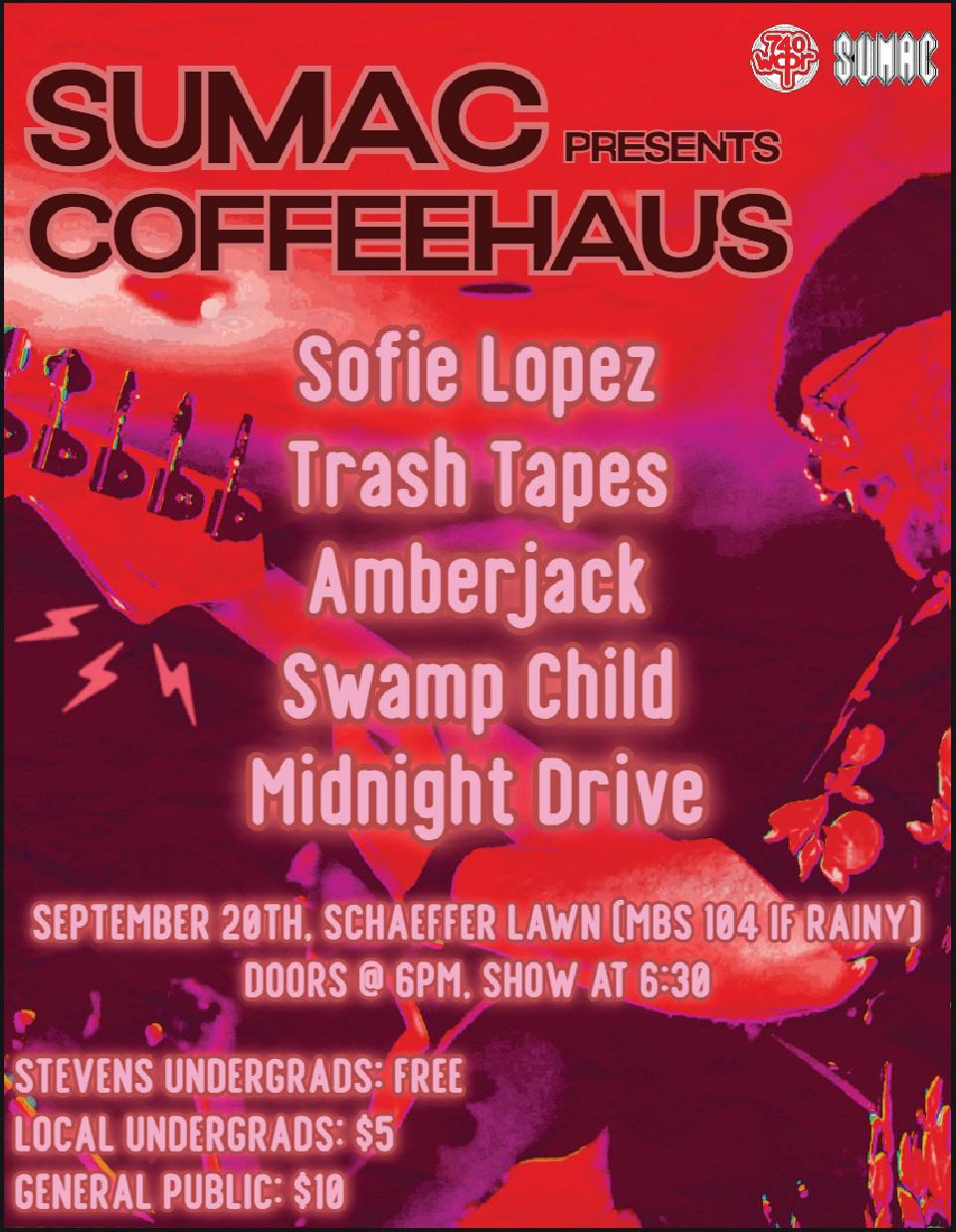
STEVENS DINING FALL 2024 UPDATES


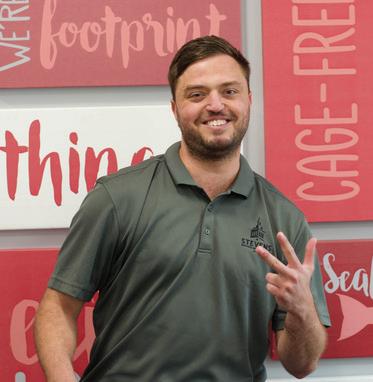
Reusable

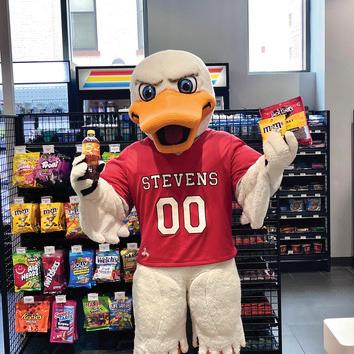
Program


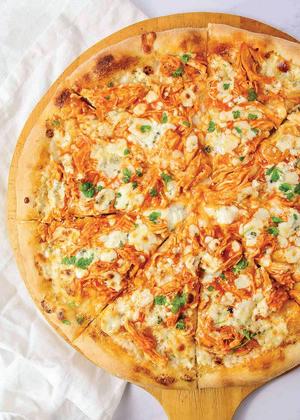

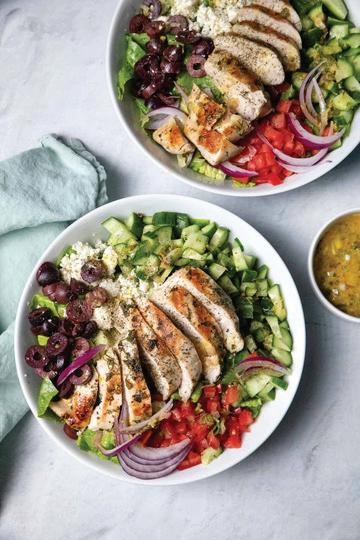
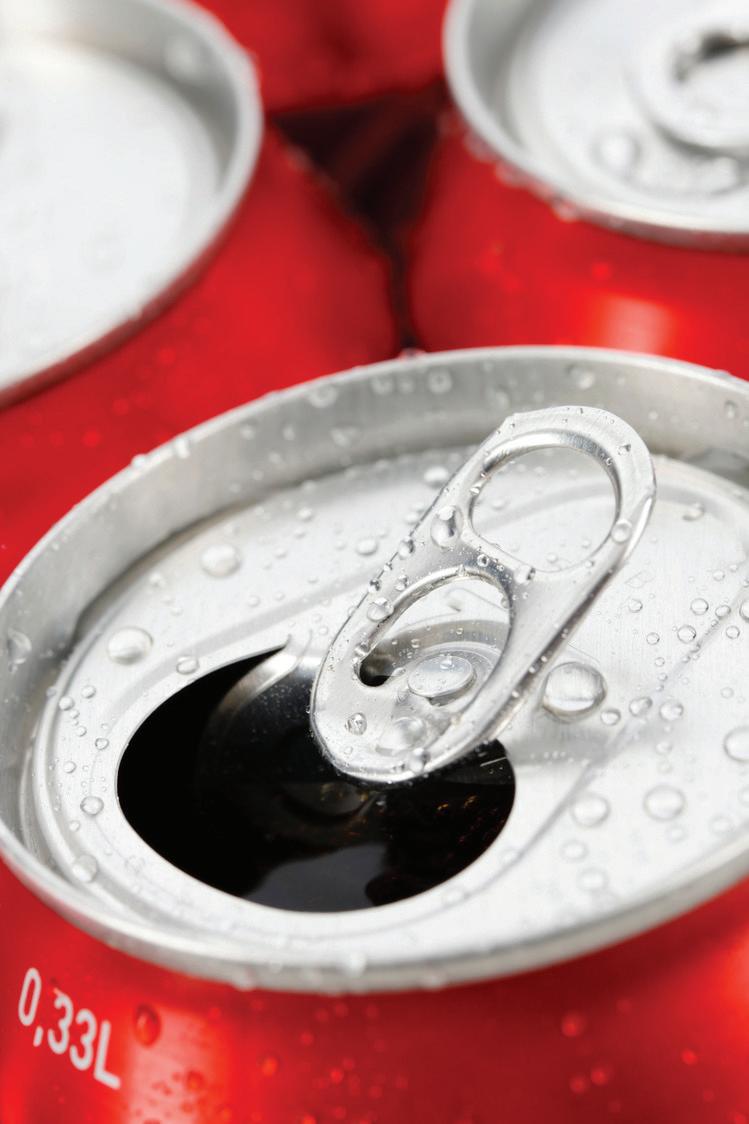
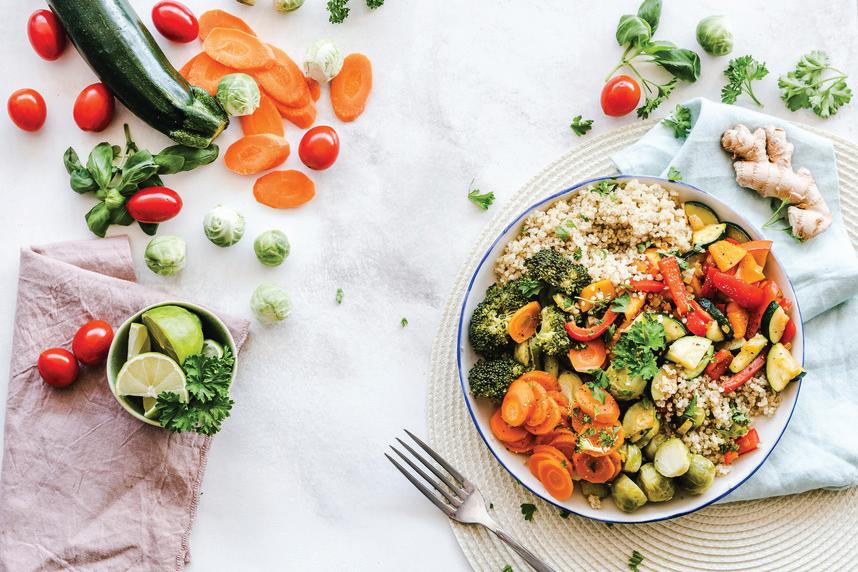
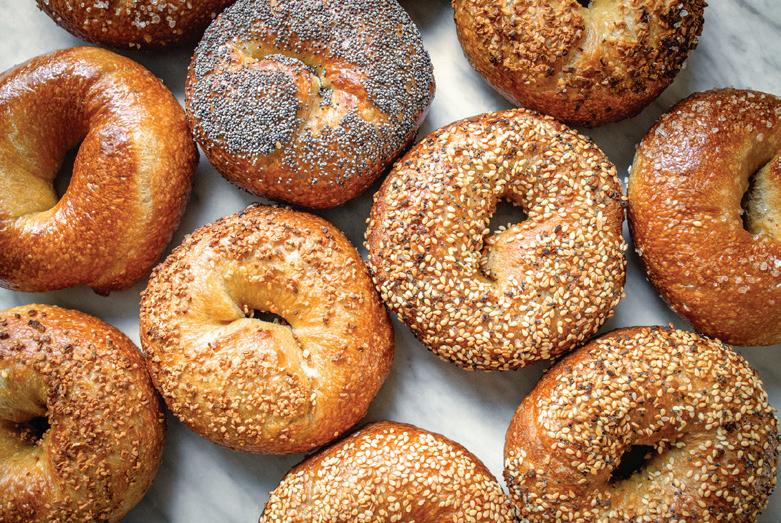
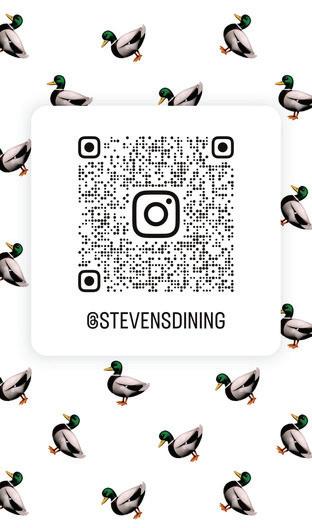
Feature
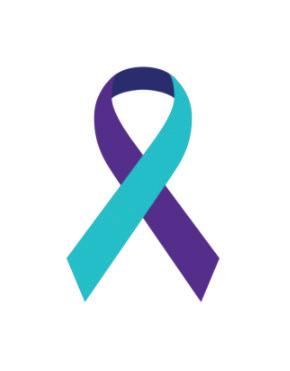
SUICIDE PREVENTION MONTH
Post-pandemic mental health — is it an actual crisis?
BY TANYA AVADIA, BUSINESS MANAGER
The Covid-19 pandemic has shifted many aspects of our society, and even four years later, we are still adjusting to a new normal. Many things have changed such as shifting to remote working and the use of social media to stay increasingly more connected. While there were some positives to come out of the pandemic, many of its after-effects have had catastrophic consequences on people. One of the biggest post-pandemic crises to have emerged is with regard to mental health. While this isn’t all that unprecedented given that the outbreak of the coronavirus uprooted how people lived their lives, four
BY TIANNA SPITZ, FEATURES EDITOR
“We are here to help.” In light of Suicide Prevention Month, centering student mental health compounding deadlines, expectations, and individual mental health needs allows us to take a pulse and determine how to support ourselves and others. Mental health swirls in the back of our minds but when it’s often forced to take front and center, do we have equitable access to professional resources and networks? What kind of support uplifts minority communities on campus to mitigate isolation?
The Stevens Student Counseling and Psychological Services (CAPS) represent the on-campus routine of mental health care and support ranging from personal concerns to psychological intervention, interpersonal concerns, and crisis intervention services.
Located on the 2nd floor of the Student Wellness Center, between the North Building and the 9th Street Gate, the CAPS office operates Monday to Friday from 9 a.m. to 4:30 p.m., but a crisis hotline is staffed around the clock with a licensed mental health professional.
There are many impressions of surrounding mental health as a college student in which student voices raise concerns over accessibility, limited number of CAPS visits, fully booked sessions, diverse professionals, and understanding a student’s past mental health history. The student therapy resources are broken down into individual counseling, group therapy, drop-in style workshops, psychiatric services, and the online therapy platform Uwill. Treatment approaches are personalized to a student’s shortterm needs and long-term goals through the use of Cognitive Behavioral Therapy (BCT), Dialectical Behavioral Therapy (DBT), and Mindfulness-Based Therapy to take on a solutions-oriented approach.
years later, the mental well-being of many people is still not up to par with how it should be.
A study done by Pew Research Center finds that psychological stress was experienced by almost every demographic to some extent, but younger people were more mentally distressed. The study asked participants questions pertaining to their experiences in dealing with anxiety, loneliness, and sleep problems over the span of the last week. The study also asked if they felt stress-related symptoms such as “sweating, trouble breathing, nausea, or a pounding heart” of which 14% replied they felt one or more of these physical reactions in the past week. Similarly, in another study
As students have the option between an in-person session or teletherapy calls geared towards on and off campus students, the choice falls between short-term individual counseling sessions and unlimited teletherapy calls to fill the gap between maxed in-person sessions and difficulty booking. Students can book a private room for a telehealth visit online on their Healthy Stevens Portal found through myStevens. Additional CAPS events include 1st Year Support Group with CAPS and programs centered on educational awareness on menthol health.
They say choosing a therapist is like choosing a partner, in which background, gender, culture, and ethnicity factor into student comfortability and vulnerability when even considering approaching CAPS. The Stevens CAPS team is staffed with a total of seven licensed psychotherapists and case managers, five women and two men, with individual specialties including social work, substance abuse, and LGBTQ+ and POC advocacy. The CAPS mission statement highlights diversity as the center of treatment and equitable care for the student landscape. CAPS has expanded staffing to increase session availability for students returning from medical leave as well as students with previous mental health accommodations.
As the semester marches on, Stevens CAPS spreads the slogan “Quack together” to uplift respect, communication, and equity through hosting events from “Letters of Hope,” mqotivational letter writing, “Strive to Thrive,” a community wellness resource fair, and past mixers such as “Speed Friending.” As an offshoot of the CAPS intervention services, the Office of Student Culture and Be longing boosts minority commu nities on campus, ranging from first-gen students to supporting student cultural organizations and encouraging an inclusive stu dent lifestyle.
reported by the Cleveland Clinic done in conjunction with PARADE Magazine, found that 74% of respondents within the 18-34 year range have been experiencing an influx of worsening mental health conditions since the pandemic and provides the following stats:
-Stress (33% overall; 42% of 18-to-34-year-olds)
-Anxiety (30% overall; 40% of 18to-34-year-olds)
-Depression (24% overall; 31% of 18-to-34-year-olds)
Loneliness or isolation (24% overall; 31% of 18-to-34-year-olds)
While mental health is bad in young adults, the effects of the pandemic on children supersedes previous generations. An interesting find by the Pew Research Cen-
BY JEREMIAH CHINWENDU, STAFF WRITER
Failure is a normal part of life. It is something that we have all experienced before in many different ways and to many different extents. Lots of Stevens students, as well as those who attend other elite universities, spend the majority of their lives at the top of their classes, receiving accolades for their achievements starting at a young age. Because of this, students who attend elite universities go in believing that failure in school or in the workforce is the worst thing that can happen, and it must be avoided at all costs. Having aspirations to make grand contributions to their fields of study, these students often ignore their past teachings that failure is a great teacher and a natural part
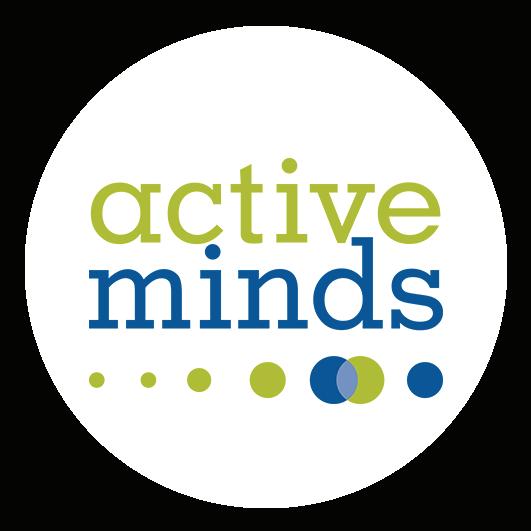
ter however is that mental health over the pandemic is divided on demographic lines with 49% of girls and 24% of boys having “not good” mental state of being almost and through the entirety of the pandemic. It is hard to explain this rift in the results but social media is theorized to have a role as girls reported more social media usage than boys. Since the start of the pandemic, parents have been listing their children’s social media usage as one of the top concerns. Given how the pandemic isolated a lot of people into their homes, people and specifically teenagers turning to social media is not surprising. However, given the sharp increase in depression and anxiety amongst this
lives and limit their potential for growth. Seeing this firsthand, Dr. Theresa MacPahail, a Stevens Associate Professor of Science, Technology, and Society and medical anthropologist, created a course called Failure 101 to teach students about failure management.
HST 140, otherwise known as Failure 101, is a course that offers the chance to examine the concept of failure through various lenses including, “historical, philosophical, cultural, economic, scientific, political, and psychological”, according to the course description. The curriculum offers an analysis of how failure is defined as well as how it affects different social groups in different settings and times. The aim of this course is to normalize failure and provide tools for coping with failure in a healthy
group, parents fear that the habit of spending long hours in front of the screen has been formed and is contributing to the worsening mental state of their kids. The difficult part however, is to break these habits and fill the gaps in the social development of these children caused as a result of the Covid-19 lockdowns.
As the pandemic shifts from reality to memory, it is important to note its impacts especially with regards to the mental wellbeing of society. It is going to take a lot of work to offset the negative emotions, but collectively through recognizing these challenges and creating a support system and infrastructure all these issues can hopefully be addressed.
students, “familiar with the concept of failure, and introduce it as a necessary and natural part of life and as a crucial component of a well-lived life”, she told Freakonomics.
Dr. MacPhail starts her class off by examining the ultimate example of failure: death. The philosophy behind this reason stems from the philosophy of anthropologist Ernest Becker. His take on society as a whole was that it is a, “ living myth of the significance of human life, [and] that we defiantly create meaning where none exists because we do not want to deal with the terror that the ultimate mistake is one that’s going to get us killed.” The fear of the unknown and uncon
trollable leads us to create constructs and try desperately to fill in the blanks and provide meaning to the meaningless as a way




Sports
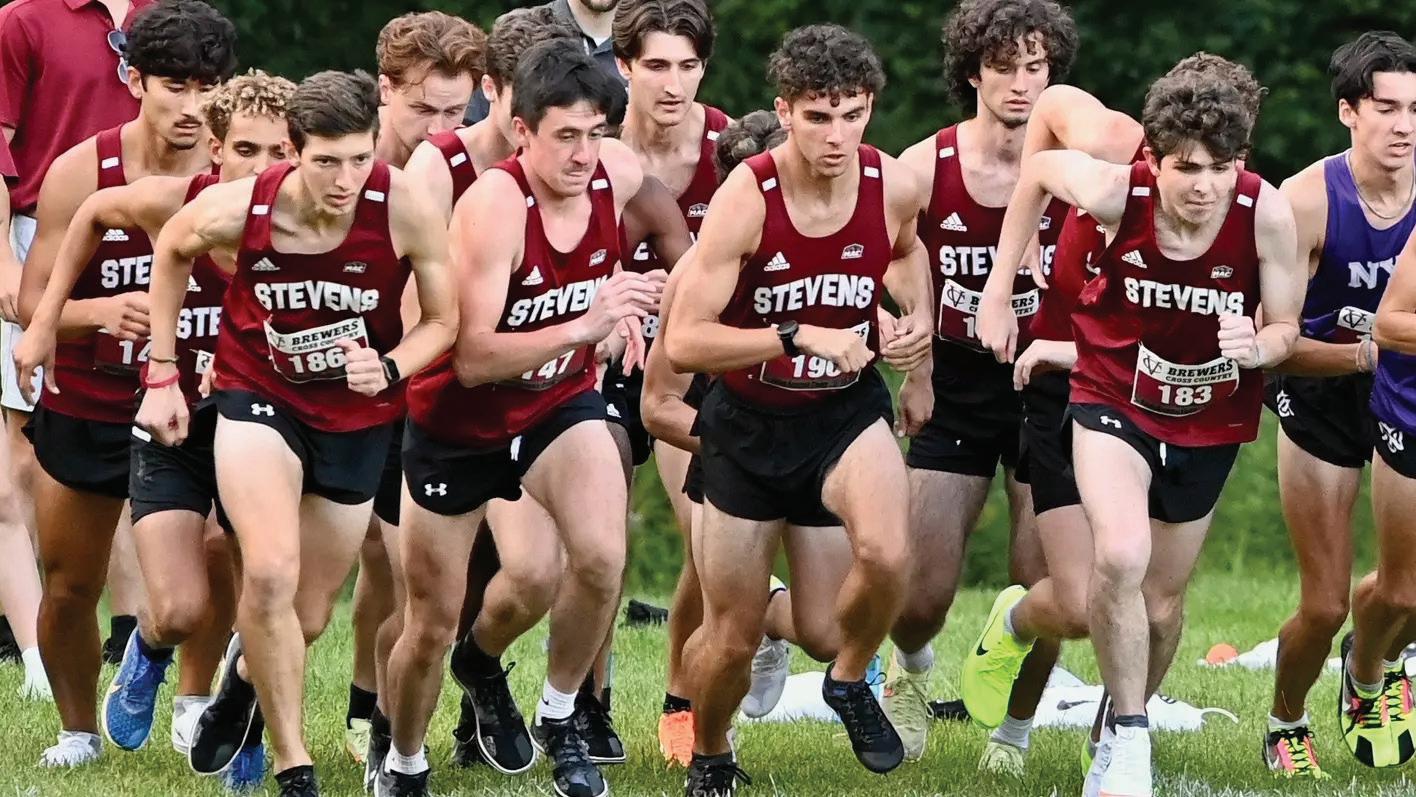
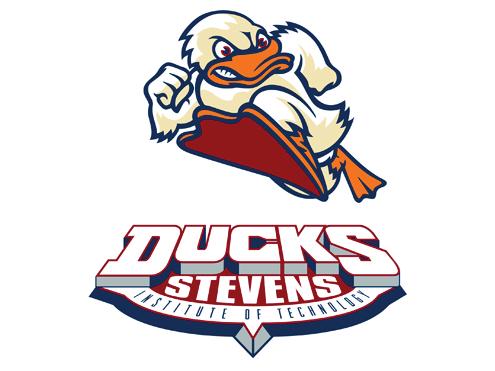
FIELD HOCKEY
Eastern University St. Davids, PA 4:30 p.m.
SAT, SEPT 21
WOMEN’S TENNIS ITA Atlantic South Region Championship–Day One Fredericksburg, VA Time TBA
Men’s and Women’s Cross Country compete at Osprey Invitational
BY CAMRYN WINANT, SPORTS WRITER
The men’s and women’s cross country teams traveled to Galloway, NJ, on September 14 to compete at the Osprey Invitational. The two teams made way for a hopeful season with this meet, where the men’s team placed fourth, and the women’s team placed fifth. These races really tested the teams’ skills as it was their first time this season running their championship distances of 8k for men and 6k for women after opening with a 3k race at Vassar College.
During the 8k event for the men, the Ducks tallied 140 team points, making them the third-highest Division III school right behind The
College of New Jersey (TCNJ) with 85 points and Moravian University with 34 points. The top finisher for Stevens was graduate student Liam Concannon with a time of 25:24.3, just missing a personal record by .3 seconds, landing him ninth place. Juniors Caleb Stephen and Mick Barbi finished back to back with times of 26:53.86 and 26:55.2 respectively. Stephen crossed with 34th place, and Barbi finished at 35th. Rounding out the scorers was Bryan Onody with a time of 27:05.82. This meet marked personal best times in the 8k for Stephen, Barbi, and Onody. Stevens also had four runners who ran in the Open Run event, with first-years Cillian Griffin, Kevin Medrow, Matt Hodorowski, and
Luke Giangrande running.
During the 6k event, the women’s team totaled 157 team points making them the fourth-highest Division III school behind Moravian University with 127 points, Stockton University with 105 points, and TCNJ with 88 points. The top finisher for the Ducks was first-year Isabella Gabay with a 12th-place time of 23:54.56, making her the top finisher in her first two collegiate meets. Sophomore Kaitlyn Adams landed 39th place, just barely missing 25 minutes with a time of 25:00.3, placing a new personal best in the 6k, passing her previous best placed at the Rowan Interregional Border Battle last October. Along with Gabay making her 6k debut, so did
Women’s Tennis competes at Swat Invite
BY RIYANA PHADKE, SCIENCE EDITOR
Last weekend, on September 14 and 15, the women’s tennis team took on three other universities at the annual Swat Invite. This year, the team totaled 13 victories against Swarthmore College, Franklin & Marshall College, and Haverford College. Stevens tallied two wins against Haverford in singles on Saturday morning. Third-year Sude Aytekin battled through to
win in three sets, coming back from a 6-4 defeat in the first set.
She pulled through with ease in the second set with a 6-0 victory, before finishing her match with a 10-3 win in a super tie-breaker. Aytekin later won her second match of the day, coming back from another first-set loss to win 10-7 in a super tie-breaker. Fourth-year Emma Eguia claimed her own victory in two sets, showing endurance on the court winning 7-6(4), 6-4. The Ducks earned their first
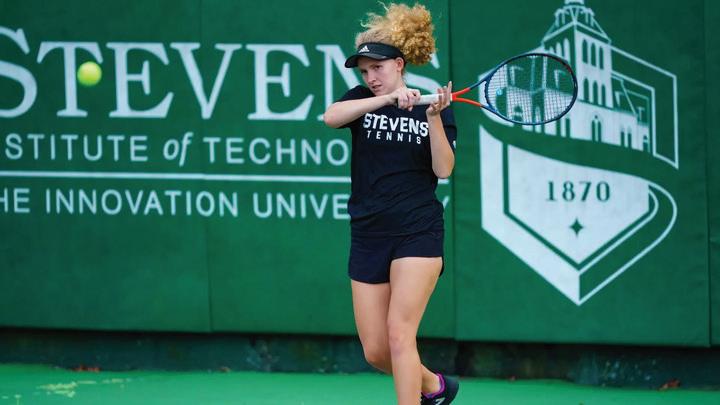
doubles victory against the host school, Swarthmore College. The duo, composed of second-year Alix Dry and third-year Stephanie Untermeyer, held their position at the top of the lineup with an 8-7 victory. Against Franklin & Marshall, Stevens had an incredible showing. Dry and Untermeyer recorded anothing doubles victory while Aytekin and first-year Milagros Carbajal Diaz tallied their first win with an 8-7 victory. In singles, the women pushed
graduate student Nina Burden, first-years Madeline Bender, Anya Sadowski, Catherine Bondi, and sophomore Kate Cen.
Head coach John Kolibab states that even though there is room for improvement, and the cleanest races are never early in the year, “an opener this strong is tremendously encouraging.” He adds, “This is the most excited I’ve ever been about a cross country group after a first meet. They’re capable of some incredible achievements this year.”
The Ducks will be seen again in Mechanicsburg, PA at Messiah University on September 28 for the Messiah Invitational. The women’s team starts at 10:30 a.m. and the men’s team starts at 11:15 a.m.
hard, winning all but one match. Aytekin dominated on the court in a decisive 6-0, 6-1 win and Dry followed suit with a 6-2, 7-6(6) victory. To round out the Invite, Untermeyer, Eguia, second-year Julianna Gomez, and first-years Gigi Arenas and Wei-Wei Lai all earned victories in straight sets. The Ducks next stop is the ITA Atlantic South Regional Championships, where the team will compete in a three-day event at the University of Mary Washington.
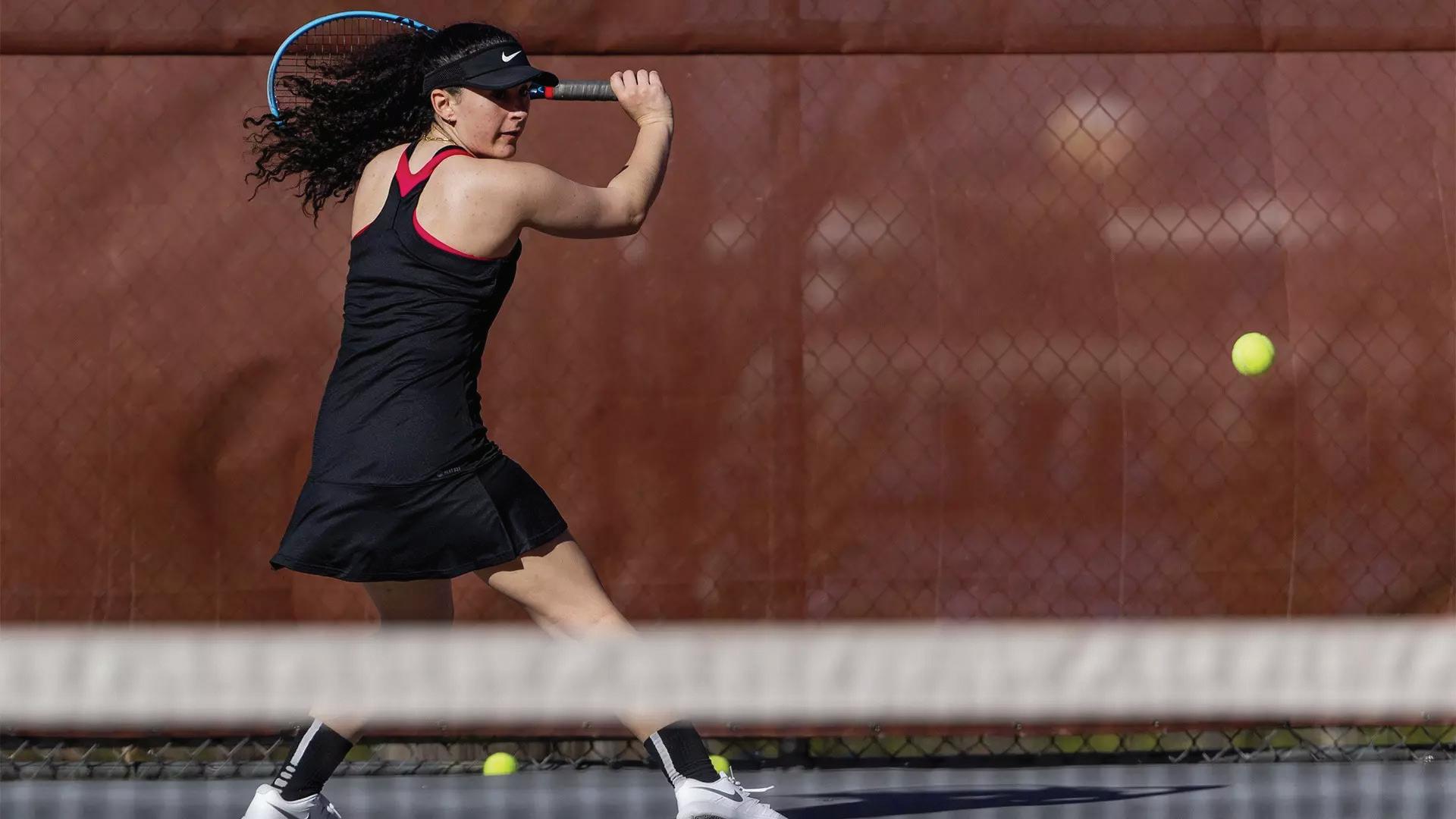
STEVENS SCOREBOARD
WOMEN’S SOCCER
MEN’S TENNIS Haverford/Swarthmore Invitational–Day One Haverford, PA Time TBA The College of New Jersey Hoboken, NJ 1 p.m.
WOMEN’S VOLLEYBALL
William Smith College Hoboken, NJ 1:30 p.m.
SUN, SEPT 22
WOMEN’S TENNIS ITA Atlantic South Region Championship–Day Two Fredericksburg, VA Time TBA
MEN’S TENNIS Haverford/Swarthmore Invitational–Day Two Haverford, PA Time TBA
MON, SEPT 23
WOMEN’S TENNIS ITA Atlantic South Region Championship–Day Three Fredericksburg, VA Time TBA
WED, SEPT 25
FIELD HOCKEY Montclair State University Montclair, NJ 6 p.m.
WOMEN’S VOLLEYBALL Misericordia University Hoboken, NJ 7 p.m.
WOMEN’S SOCCER
Rowan University Glassboro, NJ 7:30 p.m.
Dye found in Doritos makes mouse skin transparent
BY AMELIE DELA CRUZ, CONTRIBUTOR
Let’s make one thing clear: Dorito cheese dust will not make you see-through, or at least it shouldn’t. But as researchers at Stanford University have found, the use of a certain dye that these chips contain could be the key to advancements in optical research in biology.
Published in the journal Science on September 6, 2024, the study ‘Achieving optical transparency in live animals with absorbing molecules’ delved into revolutionary research taking place at Stanford University. In an experiment led by Dr. Zihao Ou, researchers used diluted tartrazine, otherwise known as FD&C Yellow 5, to see through the skin of live mice. The scientists rubbed the dye solution onto the mice’s skull and abdomen skin. After just a few
minutes, blood vessels were visible in the mouse’s brain. More interesting still, internal organs and even muscle contractions were observed in the abdomen, showing just how effective this method is for optical research.
The motivation for this research came from a need to see tissue and organs within the body without utilizing invasive surgical procedures. Researchers wanted to be able to see active internal processes. While other methods have been attempted, including fluorescence and microscopy, none have been quite suitable for live animals until this research. One vital aspect of this study was biocompatibility, which means that a material is able to be in contact with a living system without causing negative effects. As of yet, the use of dye has had no significant toxic effects on the mice, with their skin regaining opacity after being washed with
water and the dye leaving their body after urination. This shows that this material is biocompatible, which is a success in this study. This research called for aspects of both physics and biology. The lead researcher stated that this process of turning transparent is actually very fundamental physics, but to those who do not know physics that well, it can seem like a magic trick. The relatively simple physics behind the transparency is that skin is a scattering medium, meaning that light does not travel through it linearly. The yellow dye absorbs most light, and when combined with skin, a translucent effect occurs. This is not to say that this specific dye will lead to these transparent effects in humans when consumed in typical amounts like serving sizes; the concentration of FD&C Yellow 5 used in the experiment was much higher than what would be in food.
Bat loss linked to 1,300 U.S. infant deaths
BY TIANNA SPITZ, FEATURES EDITOR
At what point does wildlife health become entangled with public health and safety? The anthropocene, the current period of human activity influencing the natural environment, is far-reaching and messy as it considers how human intervention, pollution, commercialization impacts the surrounding ecosystems to reveal how human health often heavily relies on ecological levels of key populations.
A recent study in the journal Science correlates 1,3000 infant deaths in the U.S. to a population wipe-out of local insect-eating bats. Research traces the drop in bat numbers to an incurable fungal disease called white-nose syndrome. The study provides an example of how biodiversity loss affects human well-being and exemplifies the wipe-out of a keystone bat population as a case study. Eyal Frank, assistant professor at the Harris School of Public Policy and the study’s main author, highlights the tightly paired cause and effect relationship of plummeting bat numbers to an increase in agricultural insecticide use indirectly affecting human health in nearby communities. Frank establishes the first event in the domino effect as he told Newsweek “When insect-eating bat populations declined in the United States, farmers responded.”
The insect-eating bat population in North America had their first exposure to white-nose syndrome in 2006, and over the past decade, the populations across U.S. counties have collapsed as the disease caused by an invasive fungus runs rampant during their hibernation season. The fungus was traced from New York and has since spread nationally to affect bat populations in Alaska, Arizona, Florida, Hawaii, Nevada, Oregon, and Utah, most notably cash crop states, according to the United States Geological Survey. With a mortality rate of over 70% in bats, “This is essentially a death sentence for bats. Many of the affected populations are completely wiped out,” Frank said.
The mutual relationship between bat’s natural enemy intertraction to prey on crop eating pests, identifies the bats as a keystone species that served to trim the pest population and inadvertently protect the agriculture.
The diminishing predation as a natural form of pesticide is then responsible for a 31.1% increase in farmer insecticide use, which the study takes further to correlate to an 8% uptick in infant mortality deaths, estimating to 1,334 additional deaths in the surrounding area.
The study’s methods isolated the correlation of infant mortality against the control group of infant mortality rates in counties that did not report a change in agricultural insecticide use. The rates in the non-affected areas, not treated by an increase in count-reported insecticide use, remained constant.
The study only accounted for infant mortality deaths due to “internal cause of death”, excluding external accidents and violence.
The historical reach of pesticide use and negative impacts on the surrounding ecosystem that is internalized into wildlife and human health. The 1962 book Silent Spring by Rachel Carson documented the environmental harm caused by overuse of the pesticide DDT on wildlife and human health, terming insecticide as “biocide”. The study evaluates the detrimental health effects of insecticide despite use that is within
regulatory levels.
A sister study that coincides with Frank, also published in Science, authors Ashley Larsen, Dennis Engist and Frederik Noack describe Frank’s work as “important for understanding the benefits of allocating scarce resources for biodiversity conservation.”
The follow-up study takes on an economic lens to perform a “cost-benefit” analysis to quantify the anthropogenic relationship between biodiversity loss and the economy. Compounding on health impacts, the research found that pesticides were less effective than bats at controlling pests, causing crop quality and farmers’ revenues to drop. As a result, the crop sales declined by 29%, leading to $26.9 billion in losses for farmers in counties that experienced bat die-offs between 2006 and 2017. When factoring in the health impacts, including $12.4 billion in damages from infant mortality, the total societal cost of the bat die-off amounted to $39.6 billion.
Both studies work to value the entangled relationship between wildlife populations that occupy keystone roles and ultimately the give-and-take interaction between humans and the environment. Turning to health data and the economy, the studies recognize human reliance on natural populations that strengthen local biodiversity, and promote conservation efforts to protect balanced systems.
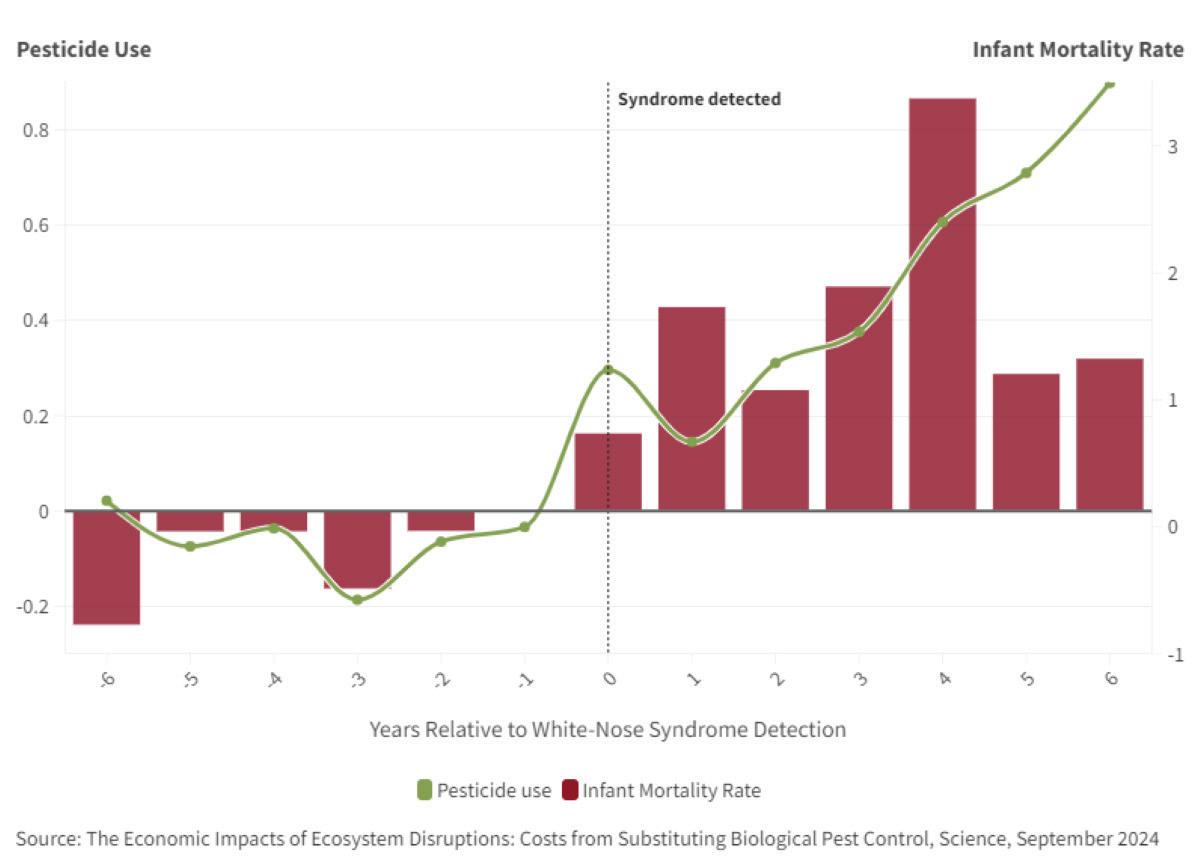
Ultimately, the goal of this study is to translate this work into humans. The process could be much harder when translated to use in humans; however, since human skin is about ten times thicker than that of mice, it would take a much larger concentration of the dye for the same effect to take place. In addition, the light of
way through a living being, which means that microscopy is not a viable option. This breakthrough could lead to many advancements in optical biology, allowing them “to look at more detailed dynamics”, according to Dr. Ou. The discovery may help to make the future of medicine and biology crystal clear with a substance as simple as
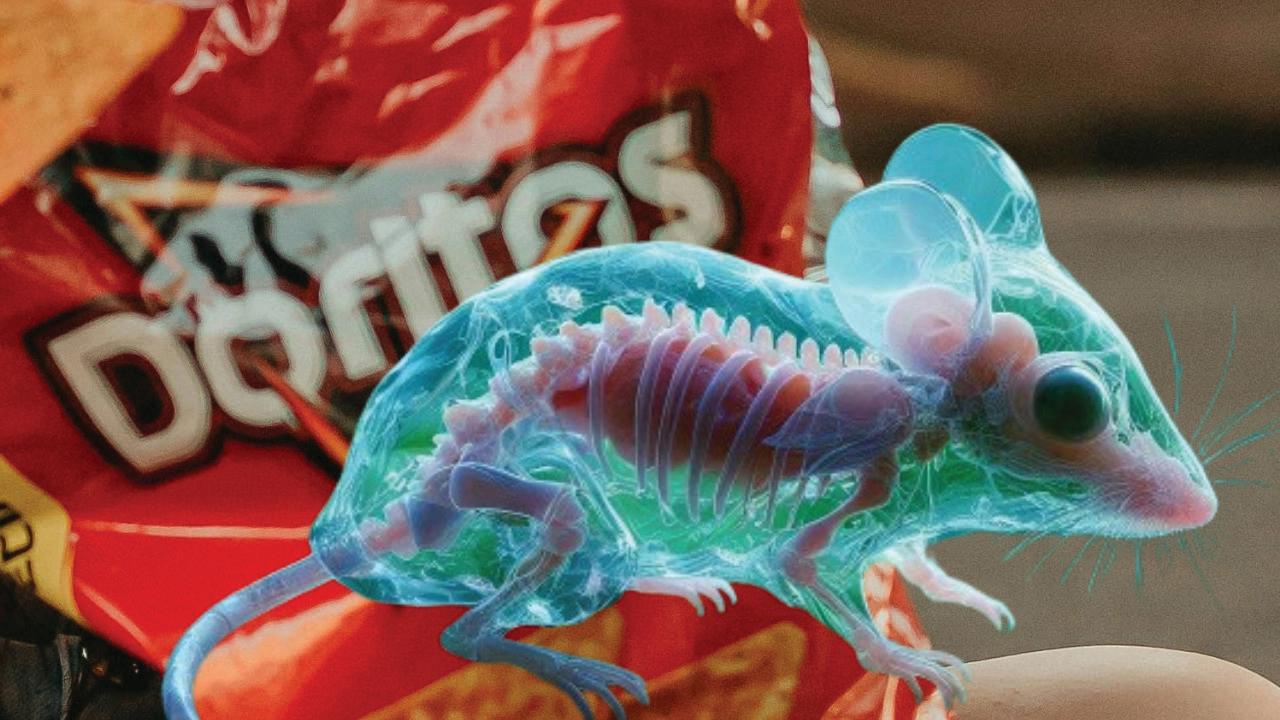
The Polaris Dawn mission
BY ADITI SHILAWAT, SCIENCE WRITER
On Tuesday, September 10, 2024, the first-ever private spacewalk was conducted. With Starlink, a laser-based communications system, Falcon 9 launched Polaris Dawn at 5:23 a.m. EST. The spacecraft was launched to a low orbit at Launch Complex 39A at the Kennedy Space Center in Florida. The crew consisted of Jared Isaacman, the mission commander; Scott Poteet, the mission pilot; Sarah Gillis, the mission specialist; and Anna Menon, another mission specialist and the medical officer.
Starlink is a private satellite company founded by SpaceX, whose founder is Elon Musk. The company’s purpose is to provide low-cost wifi to less accessible areas, such as remote access areas.
It is essentially a constellation of satellites that orbit Earth in order to reduce latency, the round trip data time from satellite to user, and support high data activities due to its low-Earth orbit. Starlink has expanded greatly since its beginning on May 23, 2019, when they launched 60 satellites on a SpaceX rocket. This mission’s astronauts will be the first ones to test out SpaceX’s suits as well.
The crew, Crew Dragon, stayed in space orbit for five days in order to achieve the highest Earth orbit ever flown at around 870 miles.
Crew Dragon is the first commercial extravehicular activity and laser-based communication in space. This mission helped to conduct scientific research that could advance human health on Earth as well as our understanding of human health during future longer space flights. The crew began investigating long-term spaceflight and space radiation’s effect on humans since the rocket traveled through the Van Allen radiation belt and will continue to do research on this matter to increase awareness and information for health protocol in space.
Over the course of the mission, several major goals were accomplished during the mission. One goal, which was performed on the third day, was to do the first-ever commercial spacewalk. Isaacman
and Gillis opened the latch and completed a remarkable spacewalk.
“Back at home we all have a lot of work to do, but from here Earth sure looks like a perfect world,” Isaacman said as he emerged from the hatch. In response, SpaceX ground crews in Hawthorne, California, could be heard on a livestream bursting into applause.
While this occurred, Poteet and Menon tested the durability and mobility of the SpaceX space-walk spacesuits. These suits are more advanced than the suits that were previously used because they provide more mobility and have more scalability for different body types. These new details were set in place in order to bring people one step closer to give another step forward in accomplishing the goal of getting humanity on Mars. In order to do so, a vast amount of spacesuits would be needed for people all over Earth.
Even though only two members of the crew performed the walk, the whole cabin was depressurized because of the lack of an airlock, unlike the International Space Station, in order to test out the SpaceX spacesuits and see if they were reliable for providing oxygen over the course of 20 minutes. Another goal of this mission was to transmit a message to SpaceX’s large number of satellites back down to Earth.
Apart from the breakthrough science that was conducted on this mission, each of the crew members found a way to add their personal touch to space exploration. Anna Menon read a children’s book she co-authored with her two children from orbit. Her son and daughter listened to her book reading from Earth. Gillis, a classically trained violinist, recorded herself performing music from Star Wars on her violin. She was accompanied by her students from El Sistema, an organization that provides music education.
After the successful completion of these missions, the team returned to Earth on September 15th, 2024, splashing into the Gulf of Mexico by Florida’s Tortugas Islands. A recovery ship retrieved the spacecraft and the crew, bringing the most ambitious commercial spaceflight to a close.
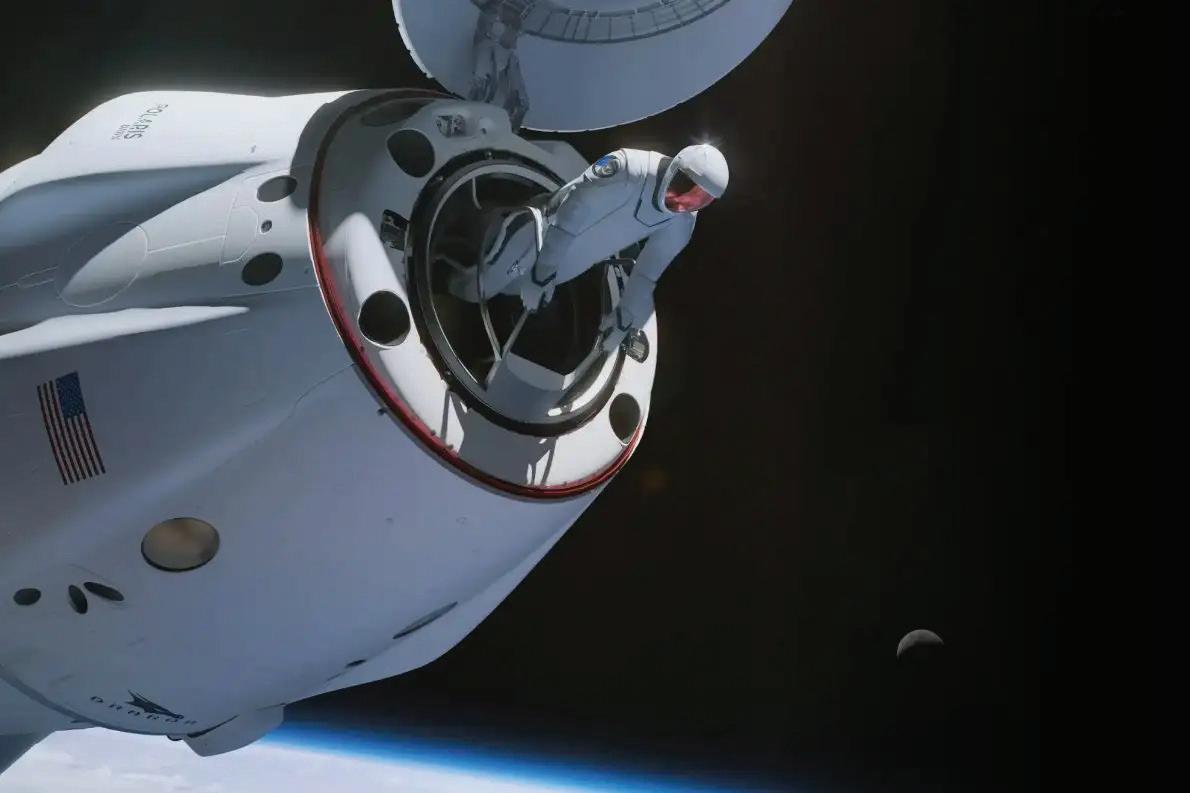
MIND OF A FRESHMAN
The smell that needs to be scent to Rikers Island
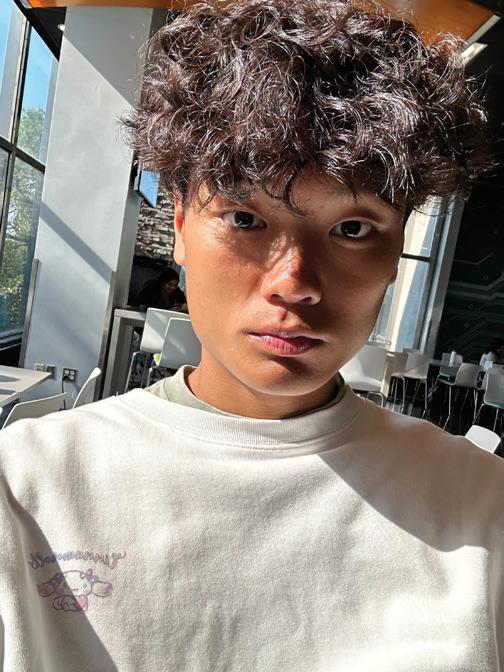
I first smelt it on my way to the Chinese Student As sociation meeting. Cruising down campus on my booster board to Burchard Hall with the wind rushing past me, I was enjoying the pleasant smell of the cam-
SENIORITIS
pus until my dream world got interrupted by something foul. I scrunch my nose in disgust as every olfactory sensory neuron in my nose gets assaulted in what I could only assume was chemical warfare. As I got off my skateboard and walked into Burchard, I could only think of one thing. “GYAD DAMN WHO BIFFED”.
After the meeting I left with some friends that I had made and went outside, only to literally be hit again with the same smell. I turned to the people around me and wondered if they were experiencing the same thing and ev-
eryone seemed to feel the same way. In the interest of self preservation, I left as quickly as possible. For those who haven’t noticed (I have no clue how you couldn’t have), there has been a lurking stench of (for a lack of better words but not really) shit in the air. The smell can be comparable to the smell of a cow lot. While it has gotten better overtime that isn’t saying much. As someone who has all their classes in Burchard and McLean, I am getting tired of it already. McLean is constantly filled with the scent of cow feces and Burchard, depending on the wind di-
rection, is spared no less. You know how hard it is to focus on DNS recursive servers when all I can think about is whose cow is releasing itself.
For the sake of this article not just being my crying about a foul smell, I decided to ask other fellow Stevens students about how they felt about the wafting smell of feces. Kaiden Garces Johannes, another cyber security major, had some strong words to say about the issue. “Yes bro there’s too many buildings that smell like f*****g shit, it’s so f*****g bad, like there’s certain rooms that I can’t even stand, like I will
actually walk out of the classroom”. Another student, Jiya Jaisinghani, says “Omggg haha not great”. Other quotes from other students say, “I heard the smell got trapped inside the building last week lol is it still stinky”, “basement is the smelliest place i’ve ever been.” To sum it all up, it’s pretty bad and students have noticed.
After a little bit of sniffing around (haha get it), I figured out that the smell is actually coming from the front of the EAS buildings where all the renovations are happening. The source is the mulch or fertilizer that they are using to pre -
sumably regrow the grass in the yard in front of Debaun Auditorium. This all being said, the freshman experience has been going pretty well so far. Considering the most upsetting thing that has happened to me over the week has been a wafting smell of shit coming from a renovating building, I’d say it could be worse. People have started to settle into campus, more functions are being held and the weather is becoming more bearable. College life is finally becoming more of a life and less like a retirement home. Until next time, toodles.
Campus job reflections
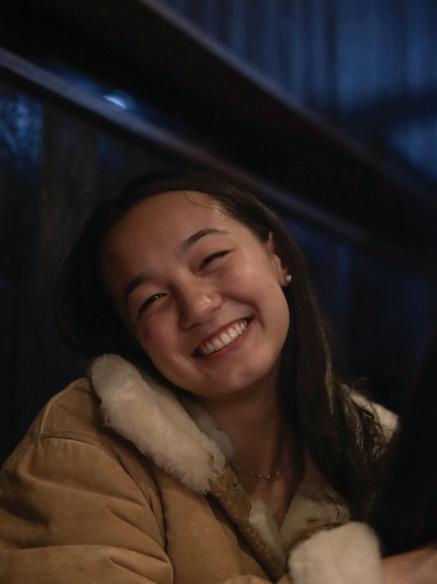
Two weeks ago, I began a new role as a Lab Assistant for ENGR 211 Statics — and it’s already scored the title of the most rewarding on-campus job in my book. Throughout my time at Stevens, I’ve held a few parttime campus jobs, starting with an extension of my high school lifeguarding career. Lifeguarding here was an adjustment from what I was used to at home. I caught the tail end of the COVID times when only Stevens students were allowed in the pool and mask restrictions had become more lax…but I was paid $6 less per hour than I was used to. In 2021, Stevens lifeguards were paid the (at the time) minimum wage of
$12.00 per hour, the standard salary for on-campus jobs, despite requiring an expensive certification that comparable on-campus salaries did not, a phenomenon that has since been remediated.
The expiration of my Red Cross lifeguard certification, the envy of watching my previous managers play Minecraft, and my rise in seniority motivated a job swap to Lifeguard Manager. When I wasn’t testing pH, checking IDs, listening to water temperature complaints, or calling in backup to remove banned residents from the pool, I would spend most of my shift killing two birds with one stone: doing my homework at the poolside. These two aquatics jobs weren’t all that, but they provided me with fun money to go to concerts and dinners with friends and, more importantly, multiple college-experience defining friendships. There is definitely truth to the saying that the more mundane the job, the better the bond with your coworkers. It leaves you with a lot of time to chit
chat and bond. I owe multiple of my current friendships (and my involvement in the Stute!) to my first campus job. I can’t say I would be writing this article right now had it not been for meeting Keenan.
While updating my resume for a full-time job interview this week, I removed my lifeguard certification, which felt like closing a chapter of my life. Working as a Lab Assistant is challenging and mentally stimulating in ways lifeguarding never was, which I fully anticipated, but it’s also put me in an unexpectedly reflective and sentimental mood. My first help desk hours last Thursday presented me with a window into the person I was two years ago, as I helped students stumble through engineering fundamentals that now feel as natural to me as the alphabet. My head and heart have grown a lot in the two-year lapse since I took Statics. Before removing the lifeguard certification from my resume, I glanced at the old ID card I had scanned for my first on-campus job application.
Despite still owning—and occasionally wearing—the shirt from the photo, it felt like I was looking at a different girl.
I remember the county worker taking my picture and how excited I was to finally be old enough to lifeguard alongside my friends. I tend to be a year younger than the company I keep as a side effect of skipping a grade of elementary school, and these periods of waiting to ‘catch
up’ with my friends’ milestones hasn’t escaped me yet. It happened with my lifeguarding certification, my driver’s license, and now once again with waiting to turn 21.
It’s amusing to reflect on the contrast between the excitement captured in that photo and how I feel about finally moving away from lifeguarding towards jobs that I now find more rewarding. I am very grateful for the way things have
played out for me, and maybe it’s just my increasingly-developed frontal lobe speaking, but I have a newfound trust that everything is going to turn out okay. A lot of my teenage years were spent semi-blindly trusting others’ advice about what would set me up for a good future, and I now feel like I’m just beginning to truly know myself, have some confidence in my future path, and reap the benefits.
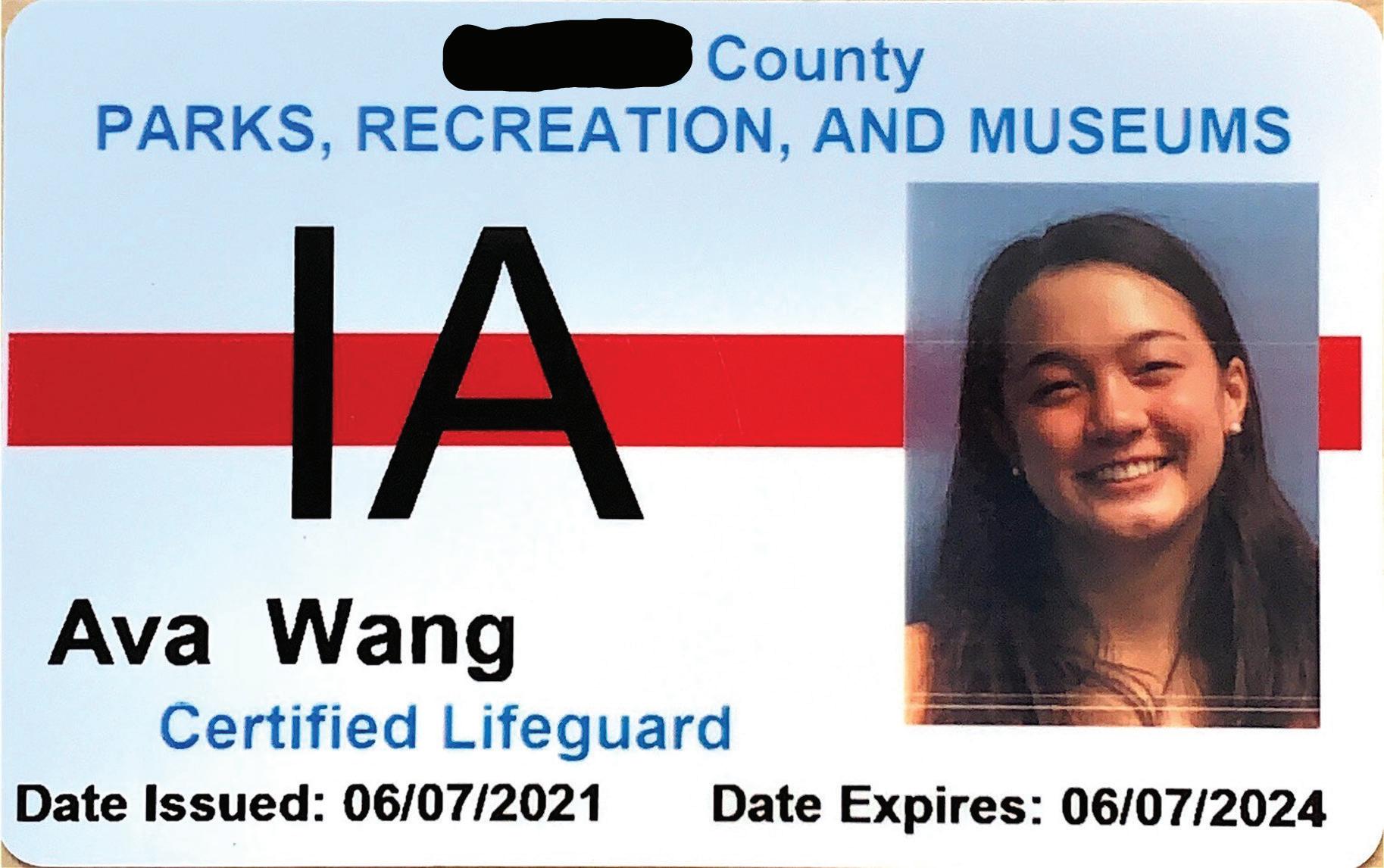
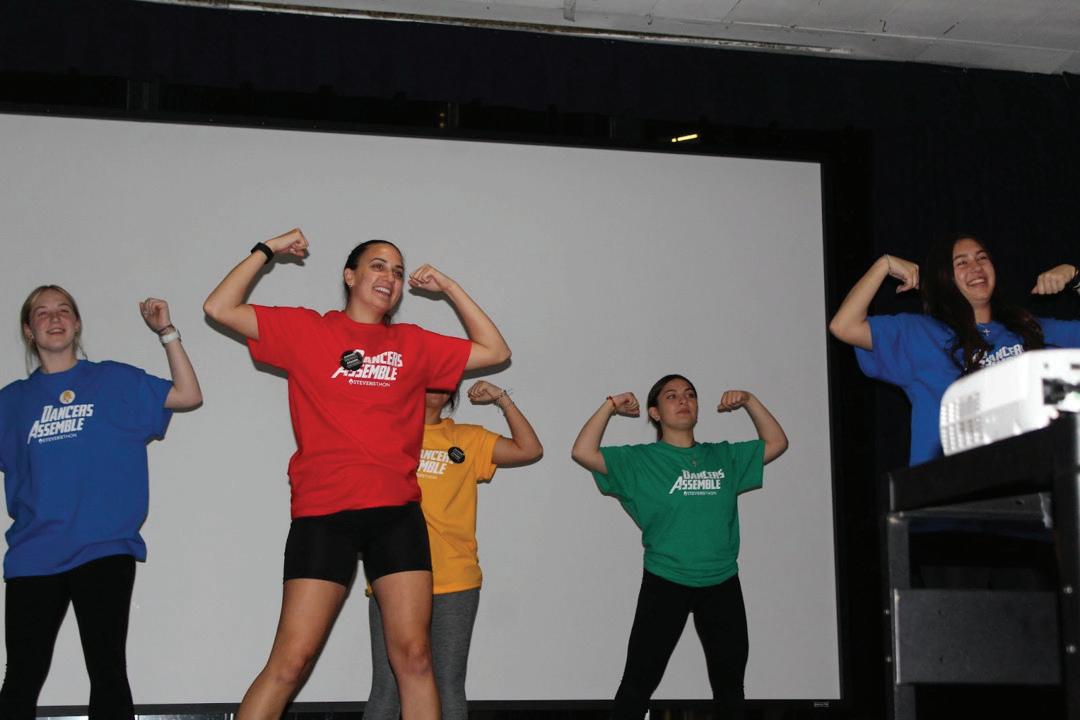
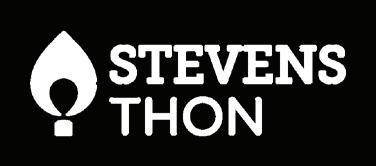


Opinion
BOOK OF THE WEEK
I am sick of science fictionenjoy some speculative instead
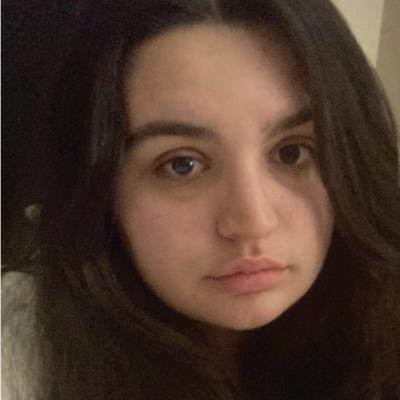
MADISON
I, for one, am sick of science fiction. This is a bold claim for someone who attends an institute of technology, I know. However, if you have been through the trenches of the literature classes like I have, then you would understand the sentiment. I am one of the very few literature majors here at Stevens, and in my second year I have consumed more science fiction than many fans of the genre do in their lifetime. And I am not a fan of it, although I have come to appreciate all the variety found within the genre. I enjoy the genre’s foundational texts, and I adore it when they venture more speculative and philosophical rather than space laser guns that go ‘pew pew’ and look cool. Science fiction is at its best when it is more speculative and veering away from specific genre classifications that would impede its ability to tell an interesting story.
So, in my own troubling era of enduring science fiction creeping into almost all of my classes, I can only recommend Murakami’s enduring classic 1Q84 Taking place in Japan in 1984, the story follows a man named Tengo, a mathematics instructor and aspiring writer, and Aomame, a massage therapist and hitman for hire, as they live through 1984, where there is a real world and a parallel world where there are two moons and everything is just slightly different. It is a love story and mystical, and the world is so lovingly crafted and reflective of life in Tokyo in 1984. When you read this book, you feel as if you could walk behind a suspicious wall and emerge in a world where there are magical spirits that must be appeased to avoid death and natural disasters, and where two moons shine over everyone. I loved this book when I read it a year ago. Mostly because it is just so weird! Everything about it is unusual and does not fit with what we expect a story to feel like. In 1Q84 , where you expect drama you receive silence. When you desire the plot to move forward, the character goes to a park and simply exists, for seemingly no purpose at all, for weeks. Details are as irrelevant as they are
ON SHUFFLE Originals on shuffle
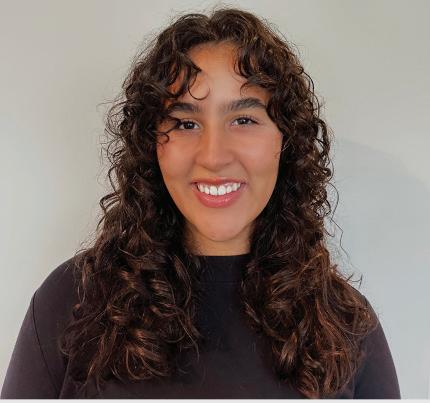
Who likes new music?
These days, it seems that all the radio is playing are new songs we have never heard of. I think it’s important to expand your music knowledge and discover new music, so thank you, radio. Through art, we can understand culture and the world around us. One of my favorite genres is singer-songwriter. Now, I love all art-
ists, and I find true beauty in all their work. However, my favorite artists are the ones who write their own songs. As much as I love the singers who step in when it’s time to perform, I think there is something so special about songwriters; their music comes from the soul.
I am someone who has always loved music. I am a musician myself and I have always had music as an outlet of expression and love. Just recently, I found one of my earlist songs dated back to 2012 when I was eight years old. Although the song is fairly juvenile and inconsistent, I was on to something back then! This trend of songwriting carried me through my childhood and into my early adulthood. I taught my-
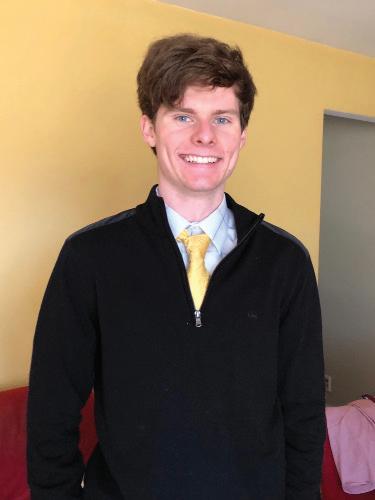
BY CHARLES BEALL B.S. ‘23 & PHD STUDENT
ics (which is probably mu sic to many an ear) since, also as the title suggests, it has been an incredibly busy start to the semester for me. As of publication, my jam-packed schedule will
important, and anything that is important is mostly irrelevant. Just as the main story appears to occupy and detail the existence of parallel worlds with opposite rules, so does this story occupy opposite and often conflicting roles within itself. No one has seemingly figured out how to classify it as a genre at all, some call it magical realism, science fiction, realistic or urban fantasy, dystopian, or even simply speculative fiction. 1Q84 is all of this wrapped up in a long-winded fantastic 1000 pages, and I highly recommend it for a challenging read. However, I do not recommend reading this book right now. Wait until winter recess, and let it dominate your entire life for a few weeks.Don’t do that to yourself right now.

FOODIE FINDS Toast x Bowl: class late, flavor great
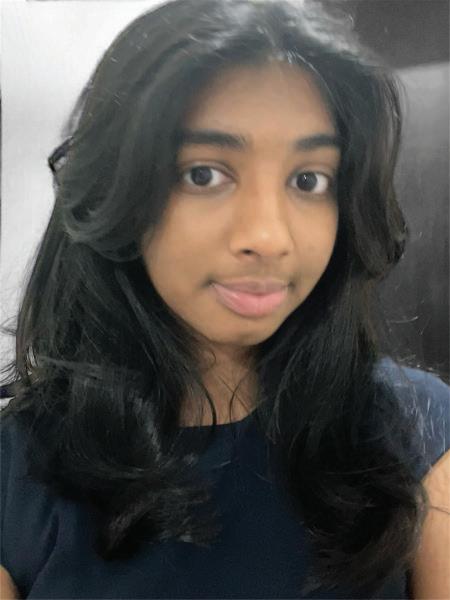
Hello, fellow foodies! Let me share a little story about why I was five minutes late to my first PRV class — because Toast x Bowl food was definitely worth the wait. Now, I don’t recommend doing what I did — debating where to eat right before class, then nervously lingering by the order pickup counter, anxiously waiting for my BBQ chicken slider to arrive. Luckily, the kind lady at the counter bumped up my order when I explained I had class in ten minutes. She even reminded me about the student discount and applied it automatically. The service was incredibly kind; this level of customer care was exceptional, setting the expectation for what Toast x Bowl is all about — great food and genuine hospitality. While the times can be a bit longer than shown on GrubHub— likely due to the number of online orders and in-person pickups— the quality of the food more than makes up
for it. My BBQ chicken slider arrived in an insulated thermal, reusable bag with their adorable logo — a smiling, blushing slice of toast holding a tiny bowl. Not only was the packaging sustainable, but it also kept my sandwich warm until I could finally dig in after class. As I sat in class, the air was filled with the aroma of smoky barbecue sauce, making the wait in class feel worthwhile before even taking a bite of the sandwich.
After class ended, I ran to a nearby boba shop with friends to devour my order. The BBQ chicken slider was smaller than I had expected, especially considering the price, but after one bite, I forgot all about the portion size. The sandwich had perfectly tender chicken slathered in barbecue sauce, a little slice of lettuce, and warm toasted buns with a toothpick speared through the middle with a tiny flag— that had their adorable toast logo on it — an extra charming touch. Not only was the food exceptional at Toast x Bowl, but so was the place itself — as soon as I walked in, I was captivated by the vibe: the vibrant murals, greenery near the seating area, and the sunlight pouring through the large glass doors. The atmosphere was chill, with soft indie songs playing in the background, which made Toast x Bowl seem like an even cozier
space. The aesthetic of this shop is curated perfectly from the word “hello” boldly printed near the door to their enormous funky sandwich art mural. I believe what sets Toast x Bowl apart is the wide range of authentic Asian flavors and fresh ingredients. You can hear the grill sizzling and the clinking of pots and pans, creating a lively and homely atmosphere. I especially appreciate that the food is prepared freshly in the kitchen. If you order in person, the portions for other food items are more generous, the food is hot, and the plating is always picture-perfect. I love that Toast x Bowl also offers a separate vegetarian menu, making it accessible to more customers. Known for their fizzy drinks, some people describe the drinks as tasting like a “vacation,” which I’m eager to try in the future, especially the Passion Fruit Pear Fizz! With its flavorful dishes and welcoming atmosphere, it is a place that makes every minute count, even when you are in a rush to class. A wall near the seating area reads “Toasty goodness and a bowlful of joys,” showing their dedication to delicious and comforting food. Just be sure to order ahead because the food is worth savoring, whether you have all the time in the world or have a break between classes.
self guitar during the thick of quarantine during the COVID-19 Pandemic. After years and years of writing about my experiences of young adulthood, I finally landed on a few original songs I wanted to share with some of my family and friends. I was quickly encouraged to finish these songs and hurry into a recording studio. Luckily, I listened to my family and friends!
On Friday, September 13, 2024, I released my first single called “Coastal Kids.”
This song was written in the fall of my sophomore year. I took a songwriting course at Stevens that developed my storytelling skills and brought me to another level. We were encouraged to write a song inspired by one of our favor-
ite artists. This originally seemed difficult for me as I always found myself inspired by countless artists. It is a blessing and a curse to find inspiration in everything; one minute, I’ll think of a song idea because I saw a movie, and the next day, a new song idea will come up about a couple I see sharing a coffee. This assignment started as a burden but ended as my first debut single. I wrote my song inspired by Noah Kahan and his discography.
The New England-born 27-year-old singer-songwriter writes about his experiences through the lens of a bitter northerner who handles family trauma and triumph. I particularly love his song “Maine” which heavily inspired my “Coastal Kids.”
On a very spontaneous summer trip to New Hampshire and Maine, I found a new appreciation for summertime in New England. On the way through crowded Connecticut highways and the back roads of Massachusetts, I blasted Kahan’s song “Maine.” This changed everything for me. It was windows down and music up all the way up the interstate, and I was living in my own personal movie. I grew up going to the beach with my entire family. The way Noah Kahan sings about Maine and his hometown is the exact same way I feel about my beachtown. After this trip, I came home and, much like I had done for my other songs, sat on my bed and reached for my guitar. “Coastal Kids” was born out of a love and
desire for the people and places that have completely changed me. I guess my piece of advice or opinion for this week is to trust in yourself. Whether you write songs, cook up reactions in a lab, or take on the challenges of AI, you are so worthy and capable of following your heart. Life is too short to not do the things you’ve always wanted to do. “Coastal Kids” is all about change and discovery, and I hope this song reaches those who need to hear it the most. This song is meant for your drive down the interstate through the backroads of cities and states. Lost in loud parties or crowded back seats, summiting great mountains, or swimming in clear blue seas, this song is about finding yourself!
significantly free up, but I wanted to provide a log of the past few weeks as well as an outlook to the shortand long-term future.
When I wrote this, I had just returned from a weeklong conference on applied and computational mathematics in San Diego, California. It was a wonderful conference where I got to present some progress on my ongoing research project, listen to many other fascinating presentations, and discuss several interesting avenues of future research. What’s more, San Diego is a beautiful place, with the conference venue right on the Pacific and a chance for me to relax on the beach in my free time.
While the above was all well and good, it was also a
fairly exhausting week. The conference had a schedule of 15-20 research talks per day from Monday to Friday, which is a lot to take in, and while I enjoy socializing with fellow mathematicians immensely, large social interactions drain my introverted battery more quickly than more solitary or small-group pursuits.
What’s more, I had to find time during the week to study for my qualifying exams, which (as of publication) I’ll be almost finished. For those unfamiliar, the quals are a set of tests to ensure that PhD students are “qualified” to do original research. They are common in U.S. PhD departments (with each department crafting their own specific exams),
and all PhD students must pass them in order to start work on a thesis. I’ve been preparing a great deal for these exams, so I am confident that I will do well, but there’s nevertheless a huge worry that comes with finally taking a few tests that truly make or break the opportunity to officially pursue a doctoral degree. So that has all been weighing on me ever since I found out about the stellar combo of big research conference followed by big set of exams earlier this year. I think I did a nice job at the conference managing all of it, and we’ll see how the exams go (I will find out the results in about a month). At first, my mindset was to work harder to prepare for these important events, by
dedicating lots of time to research and studying over the summer. This didn’t really go as planned, though. I got sick at the beginning of the summer, and the symptoms lingered for a few weeks. Fortunately, I was able to get back on track, but this helped me realize that the best way to tackle these big events is to block out sufficient time for them, while also ensuring there’s enough time for relaxation and other more idle pursuits.
As a result, more recently, I’ve been consistent about having one day each week solely dedicated to recuperation and fun outside of work. This has provided huge boosts in energy and motivation, which allowed
me to feel pretty decent overall, both physically and mentally, at the conference, despite the long days and time zone difference. I feel relatively well-rested and excited to finally take the big exams, then shift focus back to research and other upcoming deadlines, as well as other upcoming free-time activities to celebrate. The mathematical version of busy beavers (and rest assured, there is one!) will come out in the next column, but until then, I hope you are able to schedule in some rest as you get into the thick of what always turns out to be a busy semester, especially at places like Stevens and for the motivated students that make up its classes.
UNMASKING: AN AUTISM STORY
How to cool off during autistic burnout
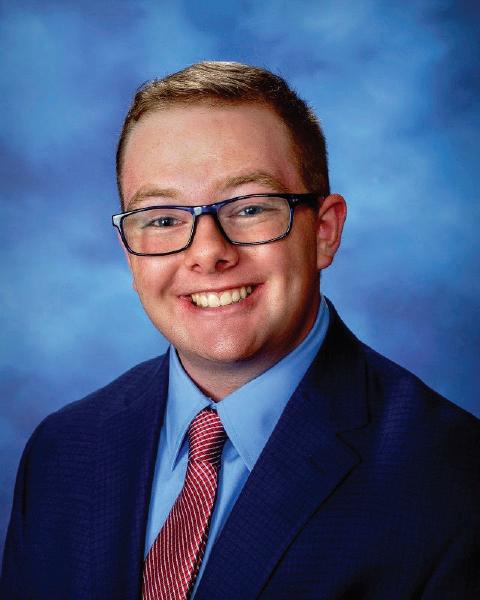
BY EVAN PAPAGEORGE ‘26
Last weekend (and where I am writing this article), I had the joy of leaving Castle Point for the first time in over a month. As much as I love being at Stevens—the views, the people, the things to do— being home has a certain allure. For one, Connecticut’s quietness and natural beauty are a stark yet welcome change of pace from the loud and busy Hoboken/New York atmosphere. This little getaway serves more purposes than visiting home; it is a good break from the pressures of school and a nice recharge to prevent autistic burnout. So, as I enjoy the sounds of songbirds
instead of helicopters, let’s go over a quick lesson on autistic burnout. Although they are related, burnout and autistic burnout are a little different. Everyone can experience burnout, whether from working too much or not having self-care, and it is crucial to prevent burnout. However, autistic burnout is more specific and relates more to the extra effort individuals with autism need daily to survive in a neurotypical world. The definition of autistic burnout is “a syndrome conceptualized as resulting from chronic life stress and a mismatch of expectations and abilities without adequate supports.” In simple terms, it is the result of individuals with autism needing to mask the stress of not understanding social cues and a lack of support in day-to-day life. Autistic burnout can look different in different people. Typically, there will be chronic exhaustion, a reduction in social interactions, and being
more removed from one’s environment. When I experience autistic burnout, I notice that everything annoys me (even stupid things like the wind), I’m tired all day but then can’t go to sleep when I get into bed, and I can’t seem to focus (on work, my routine, or even mindlessly scrolling TikTok).
While autistic burnout is hard to deal with, there are ways to overcome it and get back on your feet. The most important part is to take the time you need, whether it be a weekend, a month, or a couple of years, for more severe bouts. One strategy that works for me is social isolation, which lets me not have to mask or mirror those around me or work to figure out all of the social cues I am missing. Another is an extreme self-care day: sleep all day, have a lovely, big, late brunch, take a bath, and sit outside in the sun (even though it makes me sound like a lizard).
Although most people with autism would rather not see anyone when they
are recovering from burnout, there is a lot that neurotypical individuals can do to help reduce the pressure and stress that can lead to autistic burnout (and a lot is pretty simple). A big one is to ensure there are environments friendly to those with autism — low stimulation and quiet spaces, clear communication, and avoiding inherent biases like assuming if someone doesn’t speak up, they don’t have anything to say, assuming that everyone is comfortable in a space (office, classroom, etc.), and even some subconscious over-stimulating things like overly fragrant perfume or lotion or even noisy clothing. Autistic burnout can be brutal, but there is always tomorrow! For those who might struggle with autistic burnout, take the time you need to recover. For those who don’t but want to help, you can! And for everyone, the best way to learn and be a better ally or better at overcoming autistic burnout is simple: reach out and learn more!
The Stute GBM 3: Coffee House Newsroom
Want to get better at writing?
Interested in joining The Stute?
Hungry for some snacks while working on your article for next week?
Join us for our next GBM to ask us questions and work on an article while enjoying some coffee house favorites!
- No experience necessaryTuesday, September 24th @9:15pm Peirce 218
Entering your twenties coming from a former teenager

and honestly, I can’t say that much has changed except for the fact that at the same time so much has. Being 19 and being 20 are not all that different except that the double edged sword of adulthood becomes even more sharper. In a way, turning 20 is a great thing
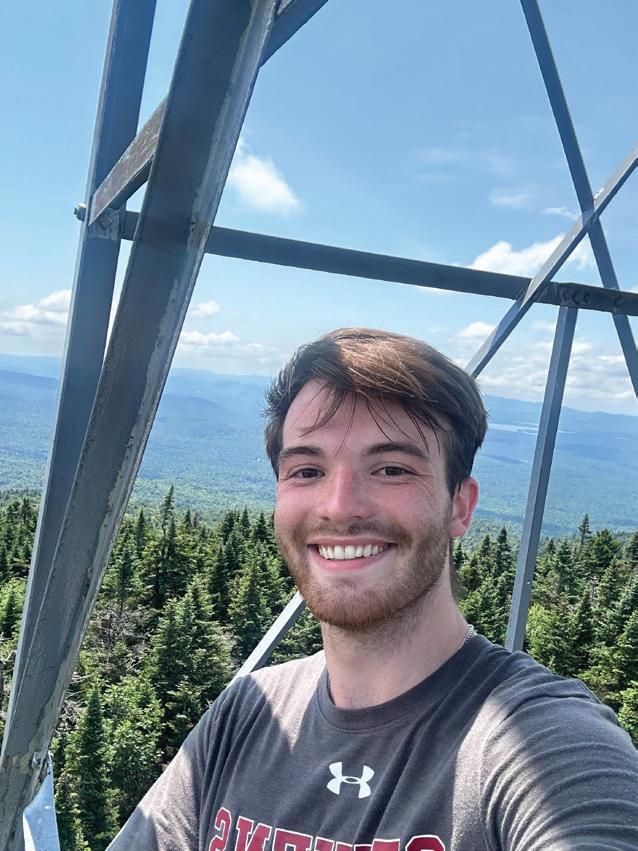
because it is the beginning of the era that society preaches as your “greatest” years. In your 20s, you are supposed to have the finances, the time, and the health to do what you want. However, what no one talks about, or maybe they don’t talk about it enough, is the pressure of actually getting your life together and how everyone’s path can look different.
Looking back at my teenage years, my experiences were very different from what was portrayed in the media. The pandemic, the insanely competitive high school I went to, and my overall nerdy personality led me down a very different path from what a typical American
BAFFLING BITS & BOBS
teenager experiences. My highlights from my teenage years were meeting some of the most wonderful people who I still consider my best friends, fangirling over animes, bands, and books, and overall just spending a lot of time with myself. I didn’t hate it, but there was always a longing to experience typical teenager-ism. Turning 20 and entering a new chapter in my life, I now realize that once again my experiences could turn out to be very different from what I was told about. However, I now recognize that this is okay. That’s the other part of being an adult, that mentally, at least for me, I don’t give into the status quo as much and I now focus on what I
like.
Another reason why I find it kind of relaxing to be entering adulthood is because in a way I have been adulting long before. Growing up in a household where both of my parents worked, I was always responsible for getting myself to places, feeding myself and taking care of all my school work. Even in college, I managed to accomplish a lot of things seen as part of the struggle into adulthood all while being just 19. I have traveled abroad by myself and with friends, I signed a lease on my very first apartment, I landed a great internship that can set me up for a job after college, and I am even on track to graduate early and get my masters.
For the love of cork (or lack thereof)
While all of this is definitely something to be proud about and a testament to the fact that I will be okay even through the more trying times, there are still so many things I lack. I still don’t have my drivers license. I am still hopeless when it comes to cooking, I definitely still call my mom too much to ask for help or advice or to just let it all out. It is certainly a very interesting mix, but what can I say? I’m just a girl! In a conversation with my friends from high school, out of which I am the youngest, we were all discussing how the things that we think about are so different compared to our time in high school. Before our furthest thoughts
would be “when do I need to turn in this assignment?” and now it is “I still need to find a job for next summer.” This is such a crazy transition but we all concluded that we are all working towards our goals, and it certainly has upgraded our hangouts from McDonalds in high school to nicer spots in the city. Either way, being 19 or 20, doesn’t make much of a difference. The transition from being a child into being a full fledged adult makes all the difference, and labels such as 19 and 20 define this transition even more. I, however, look forward to what the future holds but without the responsibility of paying the bills.
Just about every purely mechanical mechanism can be constructed from the six simple machines. These include the inclined plane, wedge, lever, wheel and axle, screw, and pulley. These days, most mechanisms are known as compound machines, which combine two or more of these simple machines to achieve their intended function. When I think about compound machines, a couple come to mind. The wiley wheelbarrow, the shifty shovel, the sex-, the sensu-, the streamlined scissors. However, I believe one compound machine trumps them all: the wine corkscrew. You can find one in
every real adult household, the mechanical ones are pretty cheap, and you generally feel GREAT after using it. Not only that but, depending on how loose your definitions are, these babies pack no less than THREE simple machines. Before I delve into a breakdown of the corkscrew, allow me to paint a picture of what happens when you don’t have one handy in times of need. You’re at your friend’s 21st Birthday Party and of course there is wine present. Alas, there is no wine opener anywhere in the apartment. So what is one to do? Being an engineer, you try to apply a more rudimentary simple machine to the task. You take a key, wedge it into the cork, and try to lever the cork out. You give the cork a shaved head and cry. Had this been the days of the Romans, you would have just gone at the amphora with a hammer and elbow grease. Alas, we have evolved, and so too has our technology.
Now that we have outlined the use cases for wine
corkscrews and their sheer necessity in the modern day (especially after your last exam did not buy you flowers afterward), I will delve into the diagram prepared by a definitely attractive, smart, funny, and cool person. As I mentioned earlier, a simple lever or wedge just won’t do to remove a cork. I don’t know about you, but I am not the biggest fan of cork in my mouth, even after a couple of glasses of wine. The aptly named corkscrew thus features a screw to neatly drill the cork with no clean-up required. The screw doubled as a worm gear, which turns the spur gears at the end of the handles. As the screw is turned, the handles are raised. The handles’ length acts to amplify the force of your hands to be much larger than what pulling straight up on the cork by inducing a moment on the cork. A moment, simply put, is just a force multiplied by the distance away from a pivot point. Once the screw has been completely burrowed into the cork, one can use the mechanical advantage of the levers
to hoist the cork, which has very little means to resist aside from friction, right out of the neck of the bottle. I mentioned that corkscrews contain at least three simple machines, but I have only mentioned two thus far. This is where we need to do a little bit of abstraction. A spur gear is nothing more than a bunch of levers smacked on the circumference of a wheel and axle. The levers allow for force to be transmitted than through friction and tension alone in the case of a pulley. In a similar manner, worm gears can be viewed as one long lever wrapped around a cylindrical shaft, in much the same way a screw is one long wedge wrapped around a cone. Congratulations, my dear reader! You now have learned or have been reminded of how a wine corkscrew works. As a reward for writing this, I think I’ll go put a corkscrew to good use. If you’re of age, I recommend you do so as well. Happy Friday! See you all in two weeks where I’ll be talking about bicycle gears or something like that.
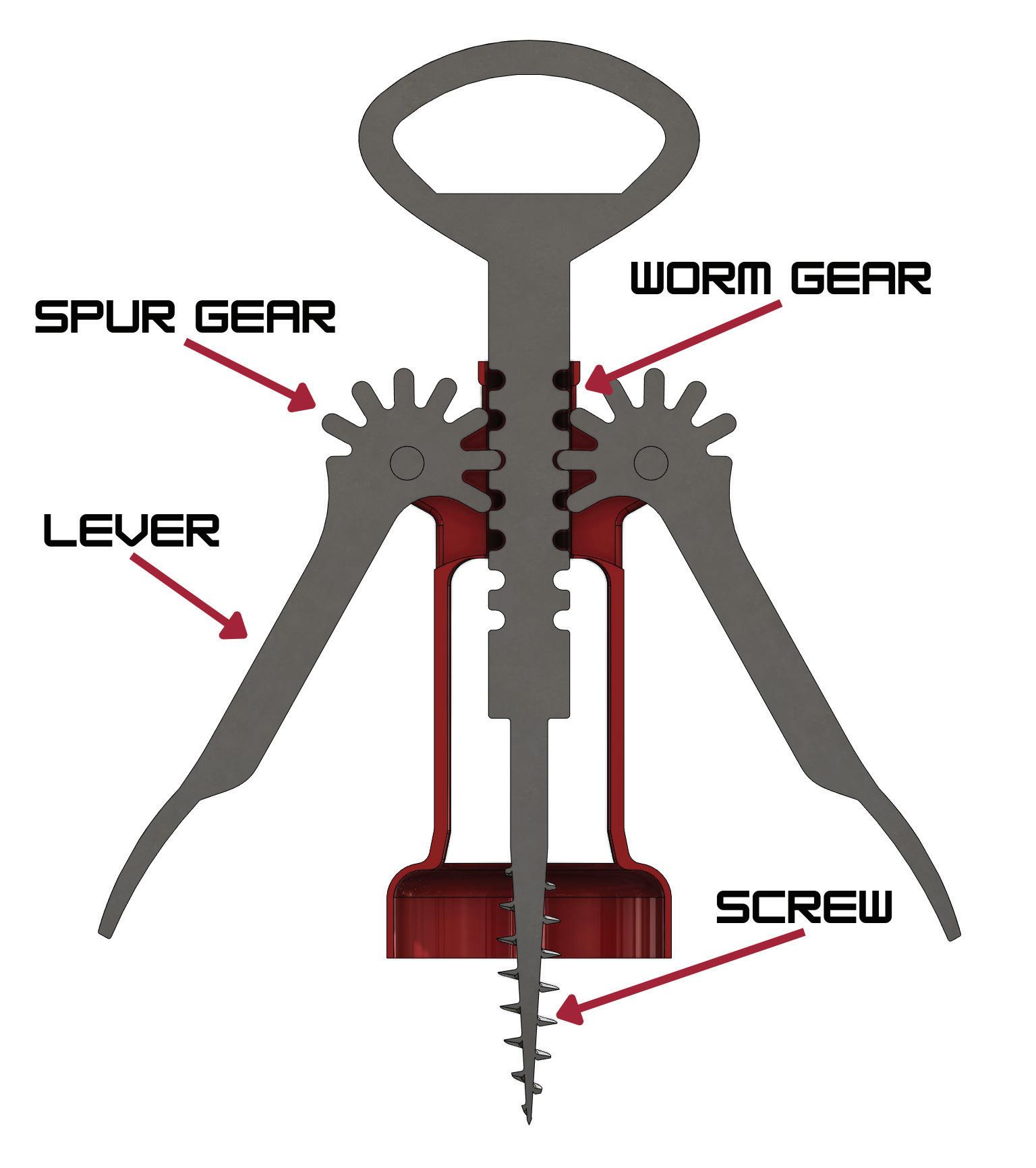
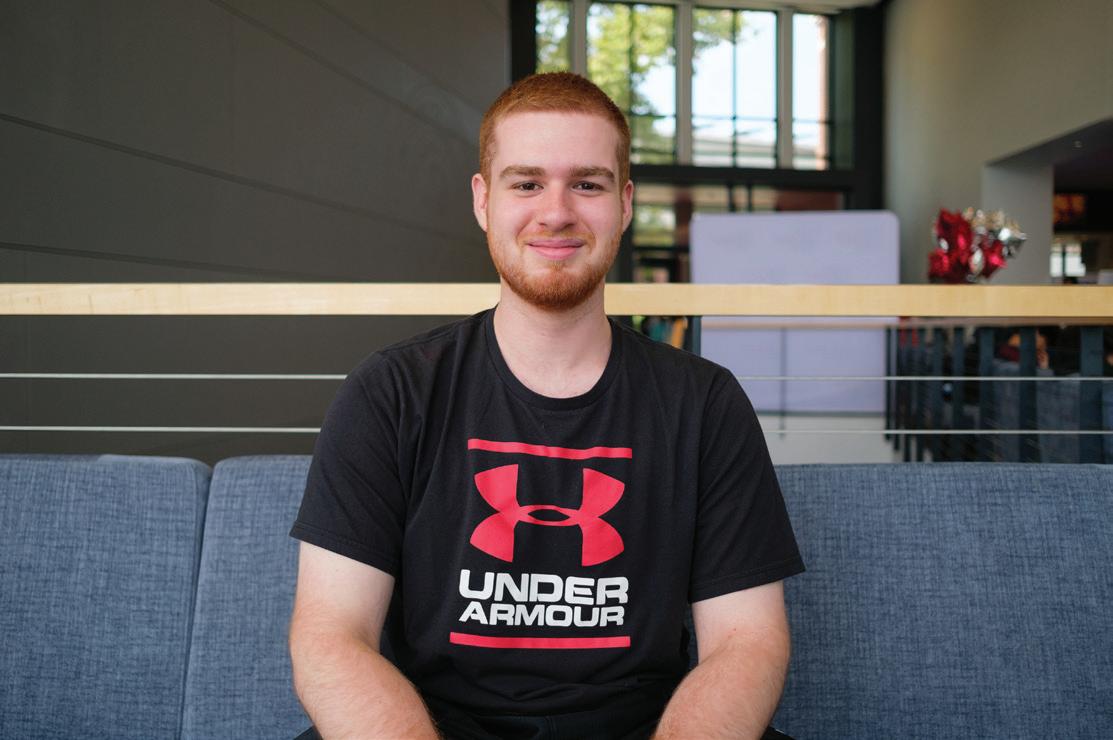
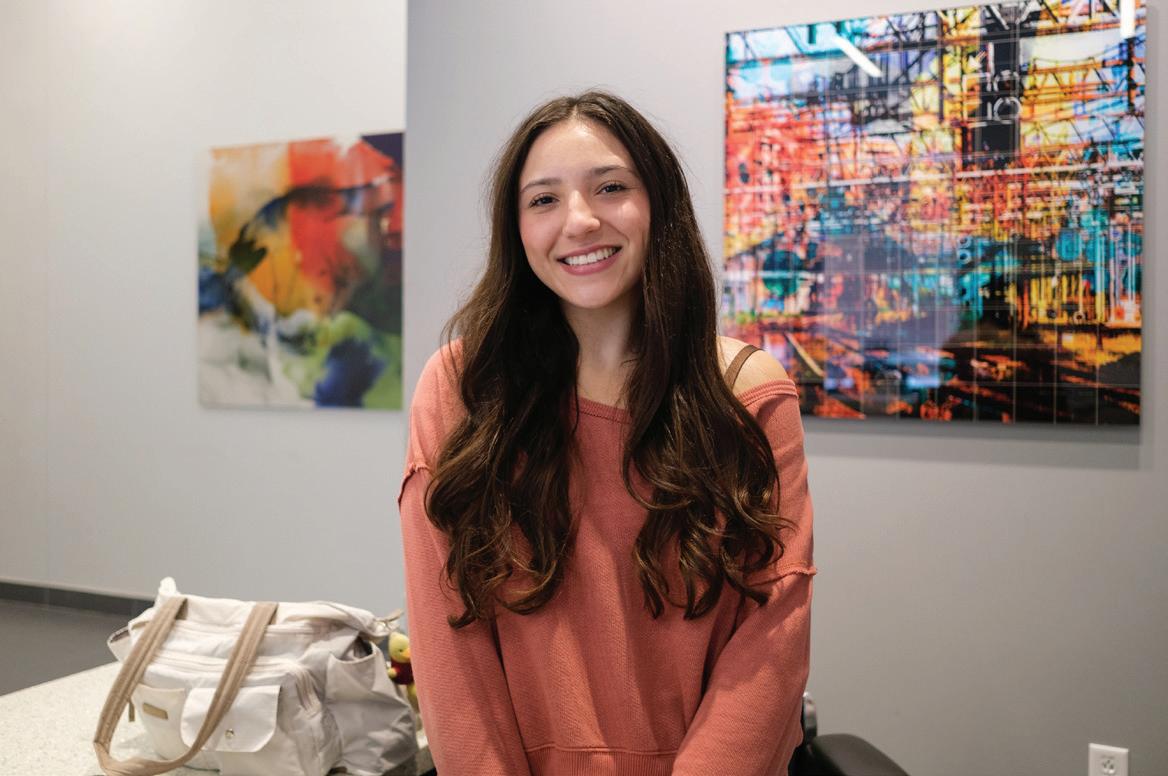
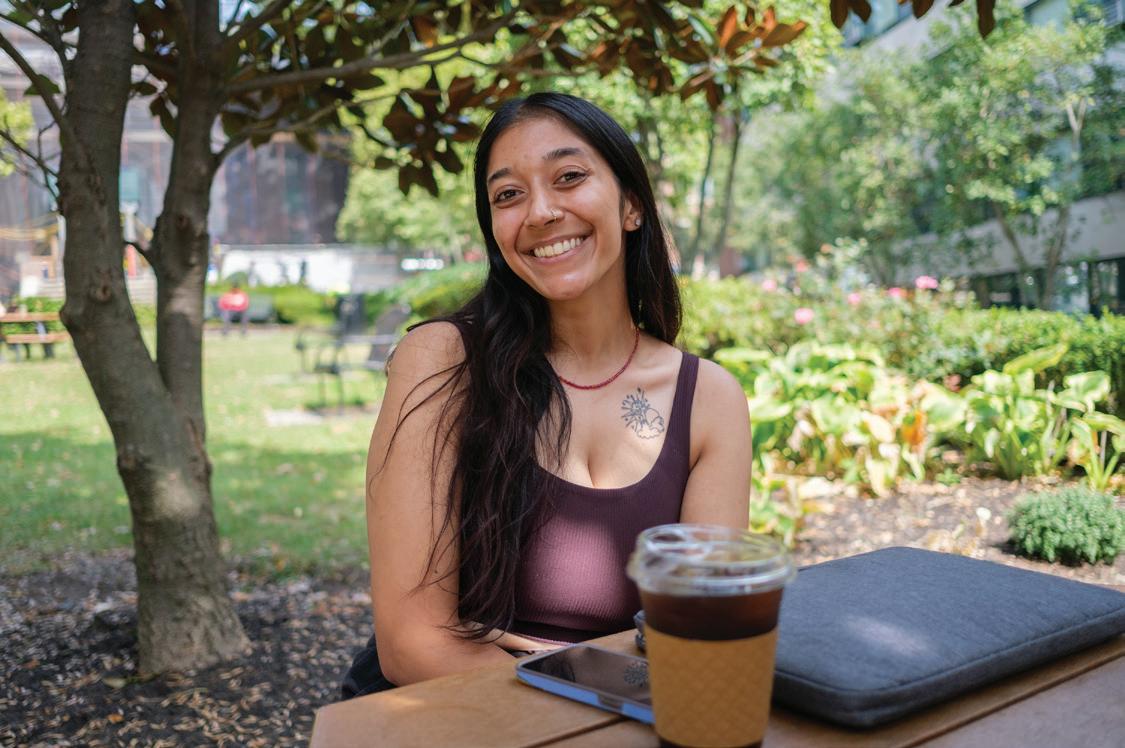
ROVING REPORTER
By Rafael Lee Li and Mia Petrolino
“What do you do to de-stress?”
